#from Ancient Greece to early 19th century
Text
We are each arched backs and bent elbows,
Awkward angles,
Interlocked fingers and points in time
Marked by breaths.
Smooth, pale surfaces with gentle curves,
Fingertips tenderly grazing,
Familiarizing the area, tracing your perimeter,
Exploring your edges.
Euclidean geometry in postulate,
In practice.
Simple mathematical treatise,
Thirteen Elements.
@nosebleedclub May 3rd - Geometry
#nosebleedclub#geometry#fun fact: Euclid wrote the book on geometry in ancient Greece#his mathematic treatise consisted off thirteen books#from Ancient Greece to early 19th century#euclid geometry was simply just.. geometry#OH! and his geometry work was called Elements#poets on tumblr#writing#poetry#spilled ink#spilled thoughts#poem#spilled poem#spilled writing#original writing#writing prompt#i wish#too cold for lovin'#need a flame to warm me up
31 notes
·
View notes
Text
The Ok Sign's historical ties to Vavooming
When Crowley describes his "hypothetical" (😉) Vavoom scenario in S2, he gesticulates a moving version of the OK hand sign to Aziraphale. The history of this particular gesture is rather interesting... especially when you consider what Crowley is saying when he is choosing to use it.

In modern times, the initial, vertical part of what Crowley is doing while talking about canopies is a sign known as "the OK sign" and, in most places, it is seen as signaling a positive response to something. Even though something that is "okay" is seen as sort of middling-- more "not terrible" than "good"-- the OK hand gesture has a much more positive connotation than the word itself does and generally means that something is excellent. It came to mean that in the United States and many other countries through American political campaigns of the early 19th century. The gesture itself, though, is much, much older than that and can be traced back to ancient Rome and ancient Greece... where it has ties to romantic love.
When painted on vases and the like, the gesture was meant to evoke a kiss through the touching of the tips of the thumb and the index finger. Interesting considering the topic of a vavoomy first kiss in the scene while Crowley is making this gesture, no?
In first century Rome-- a time and place we know to be significant to Crowley and Aziraphale's history-- it was a gesture of assent and if a person made the gesture towards another person in the Greco-Roman world? It was a way of professing romantic love for that person.
While describing a hypothetical scenario for Maggie and Nina that many of us suspect is really a recounting of his and Aziraphale's first kiss, Crowley is gesturing "I love you" to Aziraphale by the social customs of classical antiquity.
There's also a bit of fish, food and Jesus in this as well... so, very Ineffable Husbands. In the modern era, the OK sign is also the gesture used universally by scuba divers to signal that they are feeling good while on a dive. It is also a version of the "chef's kiss"-- the one that is more of an OK sign near the face than kissing the tips of your fingers. In the original version of 'The Prisoner,' the watched prisoners use the OK sign to communicate with each other, which was famously inspired by use of The Sign of the Fish/Jesus Fish as a secret symbol used by early Christians.
The gesture is also used in another unspoken language: Christian monks who took a vow of silence would also use the gesture as a base to indicate other things to communicate-- forming the index finger and thumb into a ring and holding it in front of one's self as Crowley does in this scene would indicate in that language an oblation, or offering, to God.
Crowley then keeps his fingers in the OK position and tips his hand down when he says "together", turning it all into a second gesture-- one that is known as gyan/jnana mudra, which is a hand sign used most frequently in meditation and sometimes in yoga. It is known as the knowledge mudra. Crowley also used it during the Gabriel miracle while Aziraphale used its pair at the same time-- chin mudra-- which is the same gesture, just with the palm facing up, and focuses on similar things.
Both focus on knowledge gained and the calming effects of the unification of the individual soul/ego (represented by the index finger) with the thumb (the supreme soul/paramatman-- the more actualized individual soul made boundless by light and wisdom.) The gesture is done as part of meditation to create a circuit that redirects the prana-- life force/energy-- through the body, alleviating anxiety and calming the mind through a grounding sense of connection, calm and peace.
By connecting the two gestures into one while talking about this canopy scenario, Crowley seems to be connecting the erotic and the spiritual and referencing his millennia-old romantic passion for Aziraphale to Aziraphale by using a gesture for love from antiquity... and that's somehow all before this shows up:

Who knew Richard Curtis films were this hot?
189 notes
·
View notes
Text
Word List: Fashion History
to try to include in your poem/story (pt. 3/3)
Pelete Bite - a fabric created by the Kalabari Ijo peoples of the Niger Delta region by cutting threads out of imported cloth to create motifs
Pelisse - a woman’s long coat with long sleeves and a front opening, used throughout the 19th century; can also refer to men’s military jackets and women’s sleeved mantles
Peplos - a draped, outer garment made of a single piece of cloth that was worn by women in ancient Greece; loose-fitting and held up with pins at the shoulder, its top edge was folded over to create a flap and it was often worn belted
Pillow/Bobbin Lace - textile lace made by braiding and twisting thread on a pillow
Pinafore - a decorative, apron-like garment pinned to the front of dresses for both function and style
Poke Bonnet - a nineteenth-century women’s hat that featured a large brim which extended beyond the wearer’s face
Polonaise - a style of dress popular in the 1770s-80s, with a bodice cut all in one and often with the skirts looped up; it also came back into fashion during the 1870s
Pomander - a small metal ball filled with perfumed items worn in the 16th & 17th centuries to create a pleasant aroma
Poulaine - a shoe or boot with an extremely elongated, pointed toe, worn in the 14th and 15th centuries
Raffia Cloth - a type of textile woven from palm leaves and used for garments, bags and mats
Rebato - a large standing lace collar supported by wire, worn by both men and women in the late 16th and early 17th century
Robe à L’anglaise - the 18th-century robe à l’anglaise consisted of a fitted bodice cut in one piece with an overskirt that was often parted in front to reveal the petticoat
Robe à la Française - an elite 18th-century gown consisting of a decorative stomacher, petticoat, and two wide box pleats falling from shoulders to the floor
Robe en Chemise - a dress fashionable in the 1780s, constructed out of muslin with a straight cut gathered with a sash or drawstring
Robe Volante - a dress originating in 18th-century France which was pleated at the shoulder and hung loose down, worn over hoops
Roses / Rosettes - a decorative rose element usually found on shoes in the 17th century as fashion statement
Ruff - decorative removable pleated collar popular during the mid to late 16th and 17th century
Schenti - an ancient Egyptian wrap skirt worn by men
Shirtwaist - also known as waist; a woman’s blouse that resembles a man’s shirt
Skeleton Suit - late 18th & early 19th-century play wear for boys that consists of two pieces–a fitted jacket and trousers–that button together
Slashing - a decorative technique of cutting slits in the outer layer of a garment or accessory in order to expose the fabric underneath
Spanish Cape - an outer wrap often cut in a three-quarter circle originating from Spain
Spanish Farthingale - a skirt made with a series of hoops that widened toward the feet to create a triangular or conical silhouette, created in the late 15th century
Spencer Jacket - a short waist- or bust-length jacket worn in the late 18th and early 19th centuries
Stomacher - a decorated triangular-shaped panel that fills in the front opening of a women’s gown or bodice during the late 15th century to the late 18th century
Tablion - a rectangular panel, often ornamented with embroidery or jewels, attached to the front of a cloak; worn as a sign of status by Byzantine emperors and other important officials
Toga - the large draped garment of white, undyed cloth worn by Roman men as a sign of citizenship
Toga Picta - a type of toga worn by an elite few in Ancient Rome and the Byzantine Empire that was richly embroidered, patterned and dyed solid purple
Tricorne Hat - a 3-cornered hat with a standing brim, which was popular in 18th century
Tupu - a long pin used to secure a garment worn across the shoulders. It was typically worn by Andean women in South America
Vest/Waistcoat - a close-fitting inner garment, usually worn between jacket and shirt
Wampum - are shell beads strung together by American Indians to create images and patterns on accessories such as headbands and belts that can also be used as currency for trading
Wellington Boot - a popular and practical knee- or calf-length boot worn in the 19th century
If any of these words make their way into your next poem/story, please tag me, or leave a link in the replies. I would love to read them!
More: Fashion History
More: Word Lists
#word list#fashion history#writeblr#dark academia#terminology#spilled ink#writing prompt#writers on tumblr#poets on tumblr#poetry#literature#light academia#fashion#lit#studyblr#langblr#words#linguistics#history#culture#creative writing#worldbuilding#writing reference#writing resources
90 notes
·
View notes
Text

The Hunt: Cleopatra’s Long-Lost Tomb
The Egyptian queen may rest in the ancient city of Alexandria, which now lies at the bottom of the Mediterranean.
She has one of the most captivating and enduring mythologies of any leader in history, yet the true end of Queen Cleopatra’s story remains an enigma. Archaeologists might be able to offer some clarity, if they could only find her final resting place.

The location of the Queen of the Nile’s tomb has eluded experts for centuries. Napoleon famously led an expedition searching for the crypt in the early 19th century. Egyptologists widely believe it is hidden somewhere in Alexandria, where the missing tombs of all 14 of the Ptolemaic Pharaohs, the final dynasty of ancient Egypt, are expected to be. Alas, much of ancient Alexandria now lies at the bottom of the Mediterranean Sea.
Greek historian Plutarch indicated that when Emperor Octavian ended a civil war by defeating Cleopatra and her beloved husband, the great Roman general Mark Antony, he allowed for them to be buried together. Though the prospect of finding both of their physical remains is thrilling, Plutarch wrote of their death and burial several decades after their occurrence, which casts his words into doubt.

Many Egyptologists accept that both the Queen and her royal consort died dramatically by suicide, she by snakebite and he by his own sword. Others speculate that she died by intentional drug overdose, or by stinging herself with a poison-tipped hairpin. A growing number of experts suspect the suicide is a cover-up—that perhaps the queen was murdered. Much of the contemporary understanding of Cleopatra is based on the accounts of ancient Roman and Greek historians who undoubtedly held a bias towards her. An autopsy of her mummy might reveal different truths.

Dominican archaeologist Kathleen Martinez.
Today, the quest for Cleopatra VII Thea Philopator’s elusive burial place has been taken on primarily by Dominican archaeologist Kathleen Martinez, who has dedicated two decades of her life to this mission. Martinez subscribes to the snakebite ending. She believes the ancient queen’s suicide was a ceremonial act, part of a ritual apotheosis: shedding her mortal coil so as to ascend to the status of goddess. The ritual, Martinez theorizes, culminated in moving Cleopatra’s body from her palace to a temple 25 miles west of Alexandria, Taposiris Magna.



In 2022, Martinez announced the discovery of a tunnel running under the temple that she believes could have served as a corridor for delivering Cleopatra’s body. The tunnel is widely agreed to be an aqueduct, an exact replica of a similar structure found in Greece.
After working with Martinez for 11 years at Taposiris Magna, Zahi Hawass, former Minister of State for Antiquities Affairs of Egypt, now categorically disagrees with her. For one, it would be incredibly anomalous for a pharaoh to be interred at a temple. Furthermore, he asserts that there is “no evidence at all” to indicate that Cleopatra, ancient Egypt’s last pharaoh, is buried there.
“I believe now that Cleopatra was buried in her tomb that she built next to her palace and it is under the water,” Hawass lamented. “Her tomb will never be found.”
By Adnan Qiblawi.
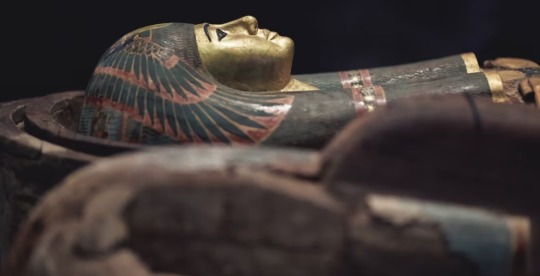


#The Hunt: Cleopatra’s Long-Lost Tomb#Queen Cleopatra#Egyptian Queen#Mark Antony#Taposiris Magna#ancient city of Alexandria#Kathleen Martinez#ancient grave#ancient tomb#ancient artifacts#archeology#archeolgst#history#history news#ancient history#ancient culture#ancient civilizations#ancient egypt#egyptian history#egyptian pharaoh
40 notes
·
View notes
Text
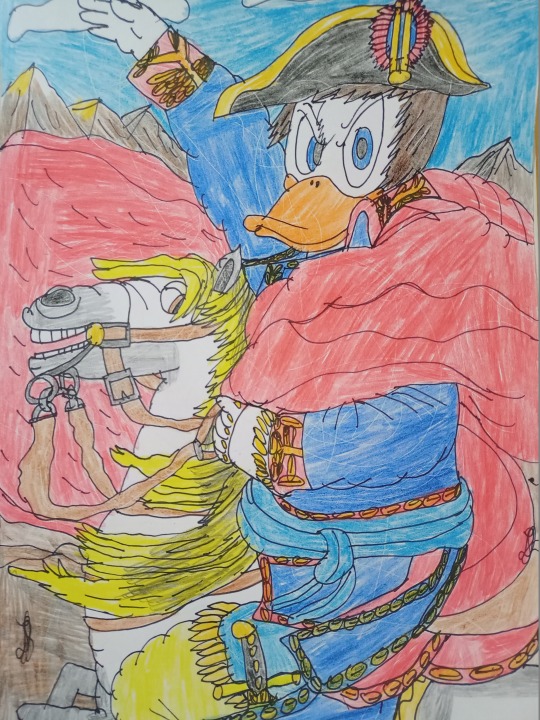
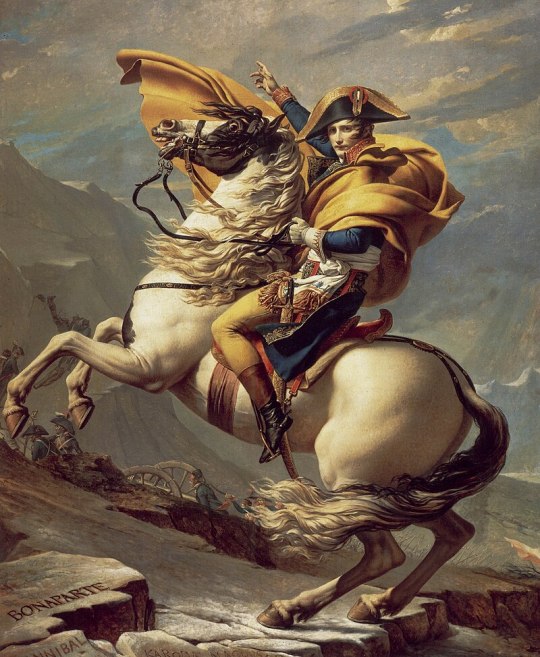
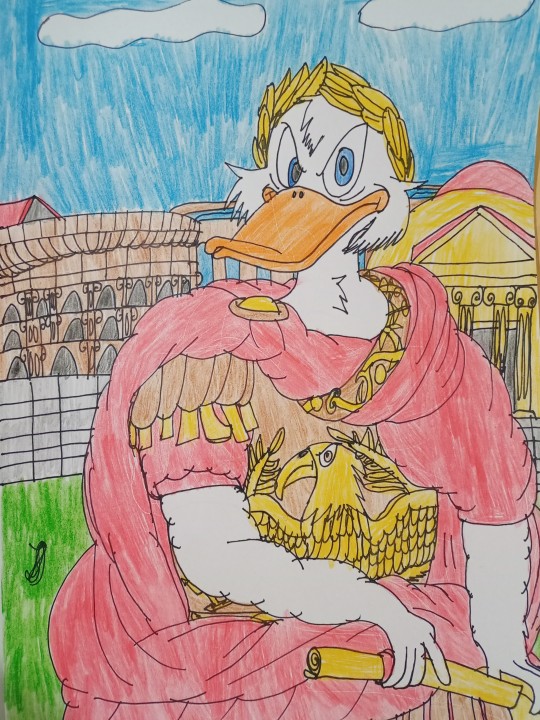
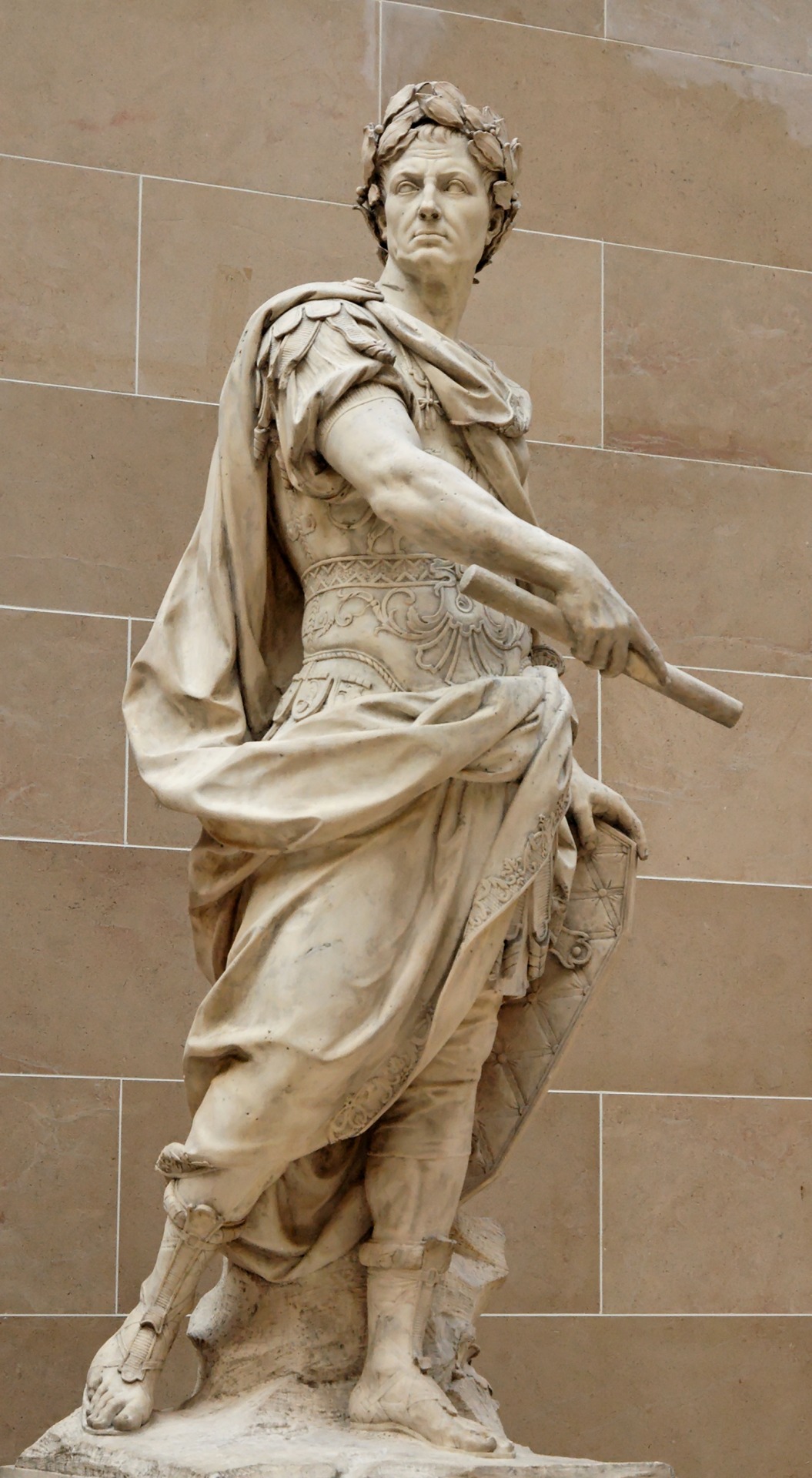
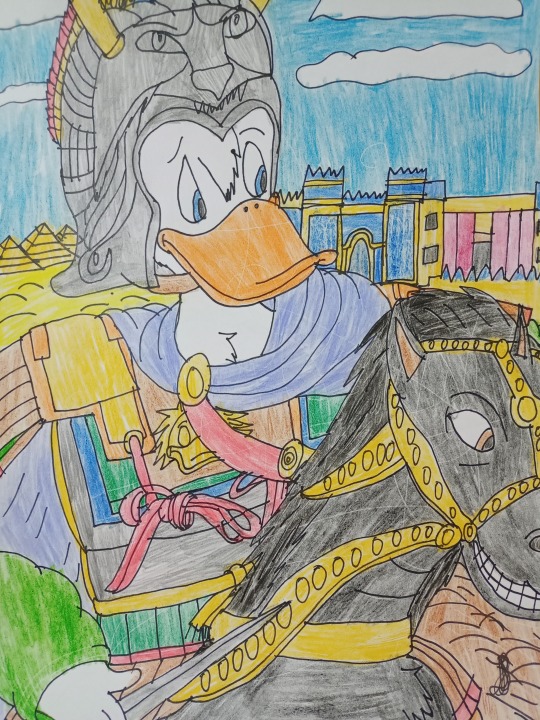
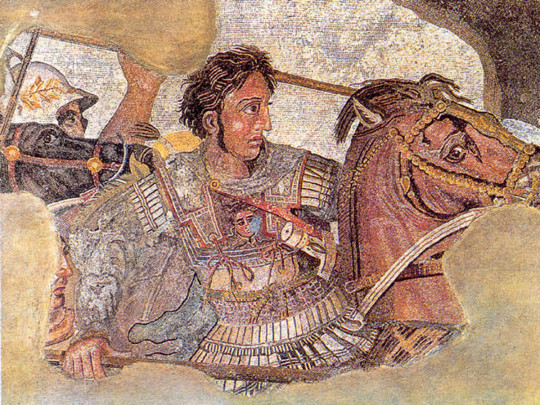
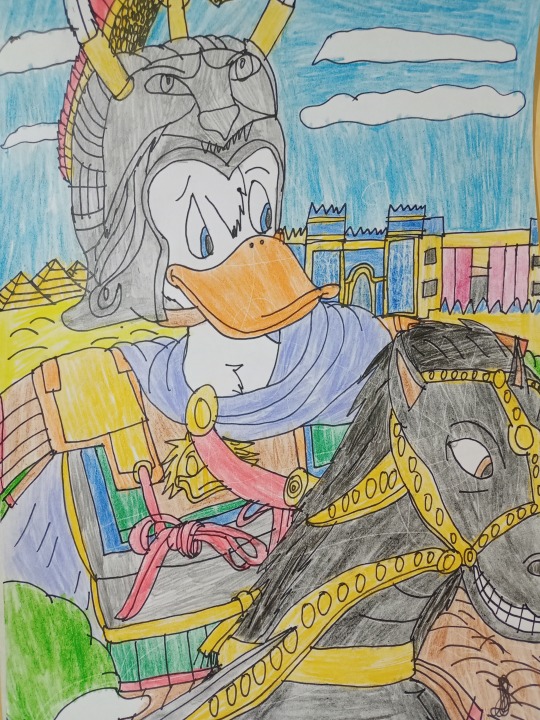
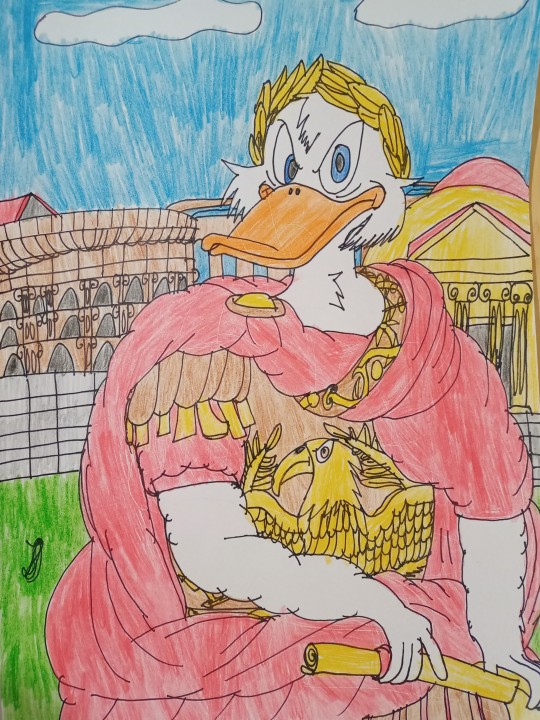
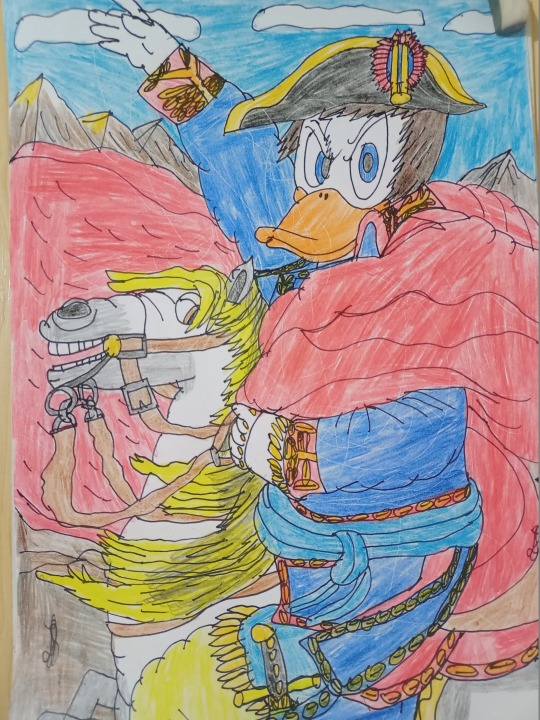
Donald Duck as Napoleon Bonaparte, Scrooge McDuck as Gaius Julius Caesar and Louie Duck (Quack Pack) as Alexander the Great - Conquerors - Real Ducks in History - History in Duckverse
I've always wanted to do a special project called Duckverse in History and my plan is to draw my favorite characters as redraws from famous works of art as well as famous historical figures. And since history is my favorite science, and my favorite field, I definitely wanted to do something related to it and related to one of my favorite historical characters. Since I don't want to complicate the situation, I will gradually publish a drawing related to that historical figure from time to time. I started this last year for Duckvember only to finish at the end of last month.
The first drawing is a redraw from Jacques Louis David's famous early 19th century artwork depicting Napoleon Bonaparte crossing the Alps in 1800 before the Battle of Marengo. Napoleon Bonaparte was the most famous French military leader, general, consul and emperor who waged war with all of Europe at the time and managed to subjugate it in its entirety except for the Ottoman Empire, Russia and Great Britain. He is from Corsica, but he left a lot for France and proved that France is not worth messing with easily. He also gave many reforms and his Civil Code which spread throughout Europe and brought order in France after the French Revolution. Napoleon's nature is very similar to Donald Duck and I drew Donald as Napoleon since he was created for that role and I drew him riding his horse Marengo in my own style, but in a realistic way and that Donald has five fingers.
The second drawing is a redraw of a statue made by Nicolas Coustou at the end of the 17th century for the decoration of Versailles, which depicts the greatest Roman, Gaius Julius Caesar. Although he was not an emperor, certainly many presented him, but he was a dictator, consul, general, writer, historian, engineer, constructor, and a great military leader who changed the Roman Republic into an almost Roman Empire. His fights against the Gauls, as well as the conflict with Pompey and his love with Cleopatra, are known, but he also changed a lot in Rome and was extremely rich. And he lived during the first century BC. That's why I drew Scrooge McDuck as Gaius Julius Caesar since Scrooge is a great leader and he also strived for fame and fortune and to be remembered in the future and he plays the role of the best Roman. Behind it are the Colosseum (built a century after him), the aqueduct (then irrigation) and the Pantheon (built two centuries after him), as well as a Roman temple that symbolizes Rome at that time, as well as the roads themselves. In addition, Topolino (Italian comics) are showed Scrooge as Caesar two or three times so that's where my inspiration came from.
The third drawing shows Louie Duck (the Quack Pack version, not the Ducktales reboot) shows Alexander the Great, another brilliant conqueror from the fourth century BC and I drew it as a redraw from the mosaic of Alexander the Great from the battle of Issus in which he confronts the Persian king Darius III from Pompeii, probably from the first century BC. Alexander the Great was the son of Philip II and the king of Macedonia who united Greece and fought against Persia and managed to conquer an entire empire in his twenties. He traveled through the Persian Empire and reached India and wanted to continue, but his soldiers did not want to continue, so he returned to Babylon, his new capital. He certainly changed the world at that time and introduced a new culture, called Hellenism, as a combination of ancient Greek culture and the culture of the Ancient East and ancient India. I drew Louie as Alexander because as a young man he is a great adventurer and rides his black horse Bucephalus and is eager for extremes, yet unlike Alexander, Louie shows a bit of his shyness, but is still brave enough to take on new challenges. I also added a helmet as worn by Alexander III in his time. Behind Louie are the pyramids from Egypt, the Ishtar Gate from Babylon and the imperial palace from Persepolis where the Persian rulers lived and it actually shows the lands that Alexander the Great conquered.
I certainly hope you like these drawings and these ideas and that these characters have such historical roles. Of course, Duckverse in history I combine mostly everything related to Duckverse (Donald Duck comics, OG Ducktales, Three Caballeros, Darkwing Duck and Quack Pack) and it's mostly my version and my idea. By all means if you like this and support these ideas, feel free to like and reblog this, but please don't use these same ideas without mentioning me and without my permission. Thank you!
#my fanarts#traditional art#artists on tumblr#donald duck#history#duckverse#ducktales#napoleon bonaparte#gaius julius caesar#alexander the great#scrooge mcduck#louie duck#quack pack#disney ducks#duckverse in history#disney duck comics#rome#france#topolino#greece#disney duckverse#quack pack au#art#my redraws#the conquerors#my fanart#comics#cartoons#my style#julius ceaser
34 notes
·
View notes
Text
Lookbook: The One With The Wedding
If you're not 100% caught up on To B With Love this this may be a bit of a spoiler, but it shouldn't come as much of a surprise that Steve & Billy get married. 🎉😘
I have been waiting to get to this point in the story and had a ton of fun researching and piecing together what a 19th century country wedding would look like for this world. So I thought I'd share my lookbook below.
Fun facts: in an early draft of my outline I had Stevie in a full gown. I was happy with this for the most part and it was in keeping with the rest of the world building - their society idolizes feminine beauty and male omegas are still encouraged/pressured to conform to those ideals. So yes, gowns made a lot of sense.
But then, thinking on it more I decided this was a good opportunity to further emphasize how their society's idolization of female omegas and subsequent devaluing of male omegas, has always othered them and forced them into a lower status within their social classes. So I started thinking about ways that dress might have been used to differentiate between male and female omegas.
Ancient Rome being one of the most influential early civilizations of the world seemed like good place to start digging for references and it bloomed from there into Greece, Albania, the Ottoman empire and Hanfu
So. Male omegas wear grecian style skirts called fusta, which traditionally are pleated and short without long trains. The ancients believed that showing off their legs would prevent families from passing off their male omegas as their more desirable female counterparts. The alternative was to wear a long skirt without a shirt or tunic to bare the chest.
However by the 1800s these skirts have undergone many different changes and been adapted by other cultures, so the popularity of a certain cut depends a lot on ones social class and their region.




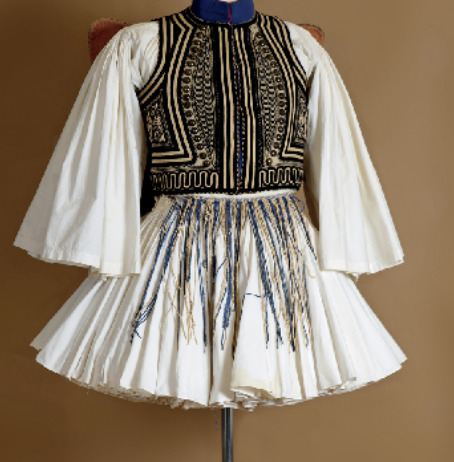
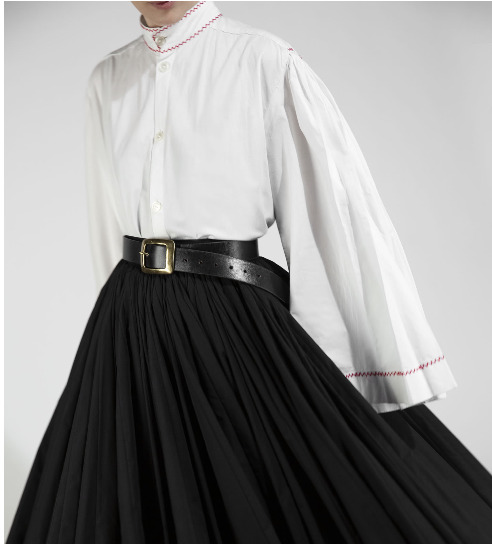
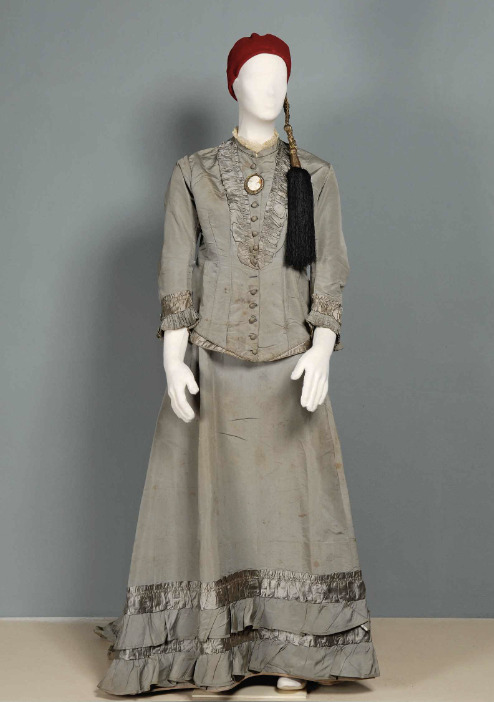


But no matter what the cut, style, or padding, the skirt is typically paired with the some combination of cloak, sash, doublet, vest or jacket. These can be very elaborate with an emphasis on intricate detailing and embellishments. That can include flowers, jewels, coins, and family crests. There is a social expectation for male brides to be flashy, in order to make up for their lack in natural beauty.

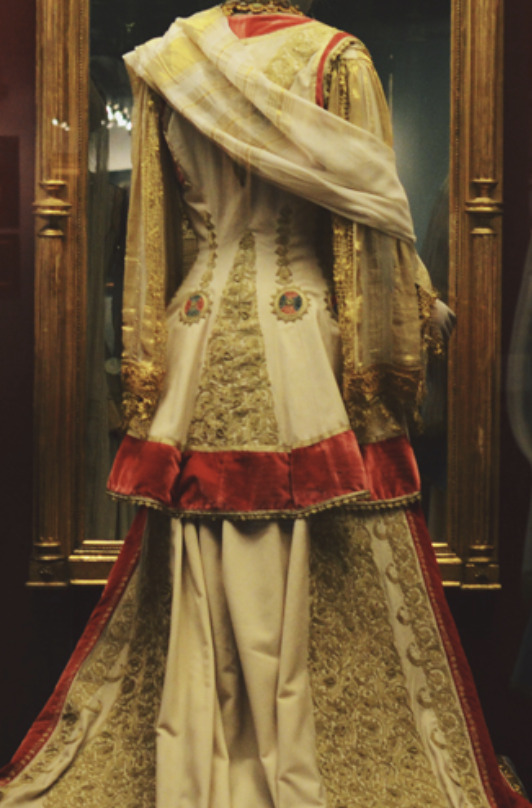
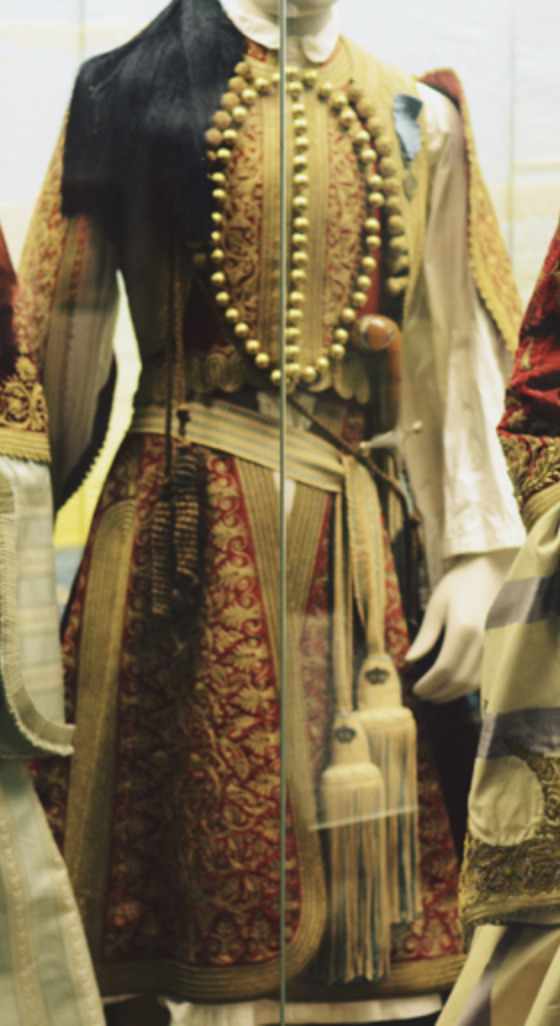

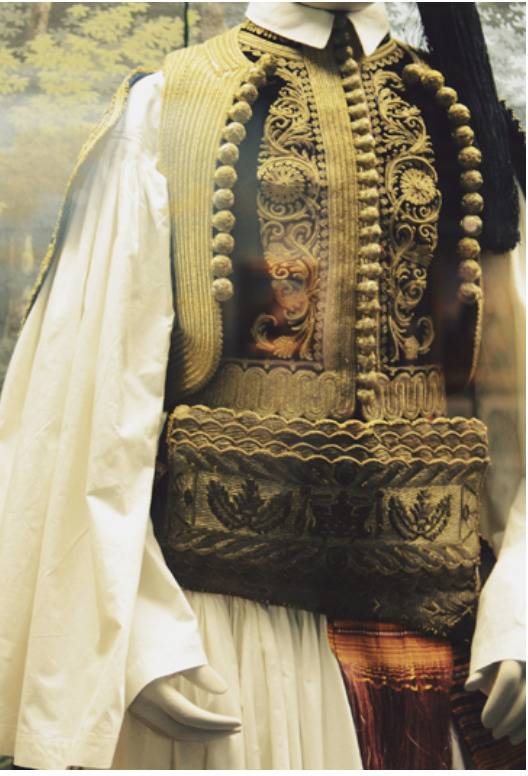

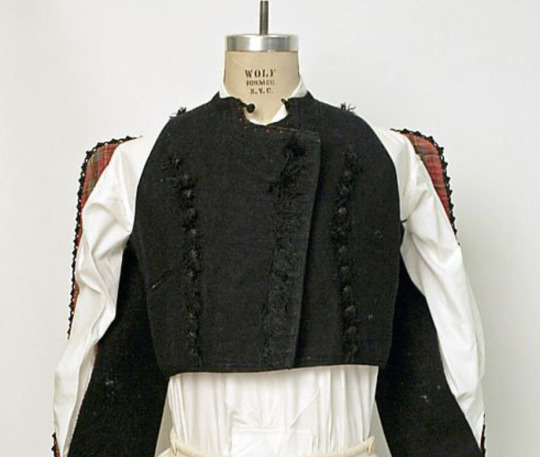


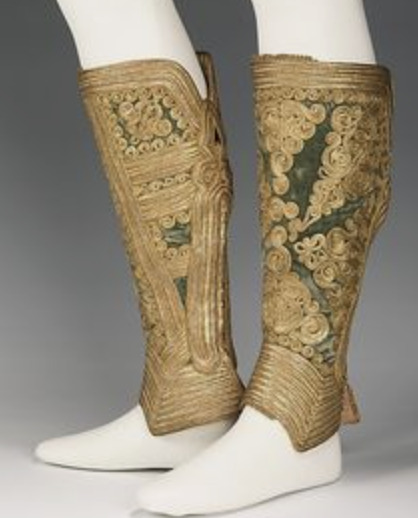


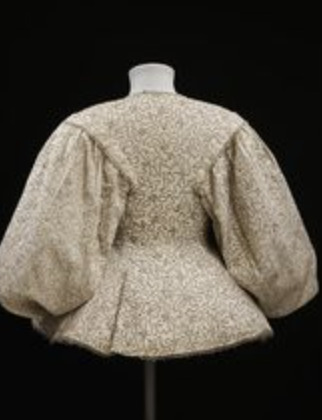





22 notes
·
View notes
Text

Leeches were largely popular in the medical field during the Victorian era both in Europe (primarily England and France) and America. The 19th century saw progression of the academic study of leeches as used in medicine that was conducted prior and laid basis for the modern application of anticoagulant in medical practice.
At the time, many famous Englishmen found leeches fascinating: zoologist Arthur Everett Shipley, for instance, wrote papers marveling at the beauty and functionality of a leech. This fascination often grew personal. Lord Thomas Erskine, a lawyer, underwent a successful bloodletting, afterwards taking with him two leeches; later naming them Home and Clina.
According to the memoirs of Sir Sam Romilly, Erskine's friend, he took great care of making sure the leeches "knew him".

In France, the obsession with leeches took drastic turns as well. François-Joseph-Victor Broussais, a notable surgeon of Napoleon's army, was known to possess a certain infatuation with leeches.
Leeches were in growingly high demand in the 19th century Europe. France imported leeches in terrific quantities equating up to dozens of millions a year.

Overall, bloodletting for medicinal purposes is not strictly unique to the 19th century Europe. Like many other medical methods, it has its roots in Ancient Egypt and Greece where bloodletting via cutting veins was often practiced by the followers of the method described in the Hippocratic collection of the 5th century BC. The medicinal use of leeches dates back to 1500 BC and is not a recent invention. However, it is only in 1884 that Haycraft learned why leeches are so efficient in bloodletting: their saliva contains an anticoagulant hirudin (hence hirudotherapy). These observations are listed in Haycraft's work, On the Action of a Secretion Obtained from the Medicinal Leech on the Coagulation of the Blood. For this property, leeches are still in high medicinal demand.
During the Victorian era, leeches were used for all kinds of medical treatment: from headaches to hemorrhoids, from fatigue to nymphomania. Sir William Henry, for example, writes that bloodletting is far beyond any other medical treatment in helping many diseases.

Albeit, the effectiveness of such treatment is a matter of much questioning as often leeching only weakened the fragile state of those being treated. Some patients were, unsurprisingly, allergic to the treatment and either suffered reactions to leeches, larger loss of blood than intended, or even died during treatment.
Leeches and bloodletting were studied with much attention: physicians wrote books on the physiology and medical benefits of leech usage, and a very detailed description of leeches was added in the 1880 edition of Johnson's Universal Cyclopaedia.
The curiosity for leeches found its way into much earlier publications as well. For example, J. R. Johnson released multiple medical studies on leeches in the very beginning of the 19th century. His A Treatise on the Medicinal Leech (1816) and Further Observations in the Medicinal Leech (1825) dwelled on the precise details of leech usage and preservation.

From Johnson's studies mentioned above, we learn that he worked with cocoons of different sizes which he received from other leech enthusiasts. He recorded that leeches are to be kept in an enclosure with a stream of fresh water coming in and turf placed conveniently so that the leeches could "retire in a shady spot". He also studied leeches' detailed anatomical structure.
Such academic interest centered around leeches in England roots within earlier academic research done by the scientists of the 18th century - for example, an apothecary by the name George Horn who published his An Entirely New Treatise on Leeches: Wherein the Nature, Properties and Use in 1798. Interestingly, even this early into the studying of leeches, he mentions the dangers of infections if leeches were to be attracted by walking bare-legged into a river (as was done in India, according to him). Instead, he promotes the English method of agitating the leech-infested waters until the animals come up to the surface to then be caught by the nets. Overall, prior to Horn's manual not many spoke in favor of leeching: William Buchan in his study from 1769 speaks on leeches as unreliable and inefficient as it's unclear how much blood is taken per use.

Horn describes four species of leech (two of which are found in England) and dwells on their peculiar anatomy:
no eyes but a teeth-filled mouth
lips to catch blood from escaping
lack of a proper stomach
presence of the so-called "bags" across their body that "get saturated when leeches receive nourishment"
Based on the gathered information, one can claim leeches were awakening more and more scientific curiosity among the English apothecaries and physicians even at the end of the 18th century.
The medical treatment of patients with the use of leeches is described by Horn as well, though he tends to recommend additional treatment - usually mixtures of milk and syrup with herbs - to be given to the patient alongside bloodletting. This as well as other studies of the late 18th century certainly became the basis of medicinal usage of leeches in the upcoming 19th century and far into the 1910s.

It is impossible to speak of leech therapy of the early 19th century in England and beyond without mentioning the influence of François-Joseph-Victor Broussais, a surgeon of immense medical fascination with leeches who employed them vastly in his treatment of Napoleon's soldiers. Broussais used around fifty leeches a time per patient and was thus called "the vampire of medicine" for his fascination with bloodletting. He claimed, among other things, that all "fevers" had the precisely same origin: inflammation. Letting out "bad blood" was thus a plausible solution to the issue.
Women wore embroidery in colors inspired by leeches' dim, soft shades. A whole sort of fashion - à la Broussais - was born out of this unusual fascination. The notable traits of this fashion, according to Michel Valentin who wrote a large biography of Broussais, were purple garnitures - embroidery, trimming - and top coats that resembled leeches' colors.
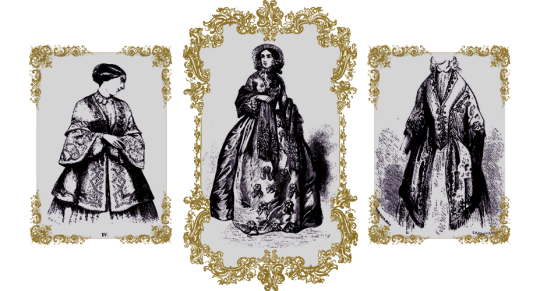
This conclusion was, of course, the result of the "humoral theory", which was widely supported in Europe. Rooting from Greece, it centered around the idea that the human body held inside four types of liquids: two kinds of bile, phlegm, and blood. Each humor was associated with two qualities, either hot or cold, and either wet or dry. Having one of the liquids "in excess" was associated with certain conditions (for blood, it was any that caused redness, for example), hence bloodletting was a naturally sought out practice.
The leeches were placed “inside the nostrils, on the inside of the lower lip, on the chest, and on the side, sometimes by four at a time.”
Leeches could access otherwise inaccessible parts of one's body (such as perineum) and were often used for treatment conditions that were believed to be connected to genitalia - for example, "nymphomaniac" states.
To apply a leech, one would hold a small leech-containing vessel filled with water to the desired spot, wait until it bites, and then gently remove the container; tubes could be used as well.
A whole industry related to leeches was established in the 19th century: propagating leeches rose to the state level of importance and leech keeping became a popular activity. Leeches were, in fact, nearly hunted to extinction in some European countries in the 19th century, including England. Containing leeches started to become complicated: leeches only needed meals once every six months (and thus were not suitable for frequent use) and required specific conditions of containment. Thus, the mechanical leech quickly became a popular invention. The first prototype of 1817, called bdellomètre, is credited to French doctor Jean-Baptiste Sarlandière.

Transactions of the Pharmaceutical Meetings (1855) notes some statistical numbers regarding the "leech hunt" of the 19th century: in imports alone England received 8 million leeches annually, besides the large numbers collected within the country. The practice of using mechanical leeches (two types for different purposes) is mentioned as "ingenious" and discussed as a great opportunity to keep the natural leech healthy. The book tracks down purchases of various vessels for fresh water used as leech enclosures.
Actual preservation and propagation of leeches are described in various books of the time, though the peak of such publications in England comes around in the 1850s.
In 1855, Specification of Nathaniel Johnston: Breeding, Rearing and Carrying Leeches is published. Johnston, whilst in Paris, invented an apparatus for keeping and breeding medicinal leeches: a complicated water vessel to keep leeches at the perfect temperature and humidity for the breeder - the inventor titled these containers hirudinieres. A similar invention was marked by another author in Specification of George Lifford Smartt: Vessels for Preserving Leeches and Fish Alive.

There was a lot of thought and effort put into keeping leeches healthy and vital - either for medicinal purposes or out of personal fascination.
#༺☆༻ 𝕮𝔞𝔫𝔦𝔰 𝕸𝔞��𝔬𝔯 ༺☆༻#historyblr#english history#french history#victorian history#medical history#victorian era#victorian#18th century#19th century
59 notes
·
View notes
Text
Deep dives into folklore: Werewolves
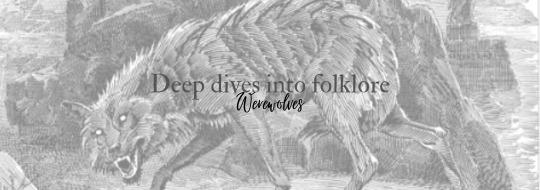
Werewolves, often depicted as humans with the ability to transform into wolves or wolf-like creatures during the full moon, have been a recurring theme in literature and mythology for centuries. The concept of the werewolf has evolved significantly over time, reflecting the changing beliefs, fears, and societal norms of different cultures. Today we are exploring the fascinating journey of the werewolf from its ancient origins to its modern-day interpretations in literature and popular culture.
The origins of the werewolf myth can be traced back to the ancient civilizations of Greece and Rome. In Greek mythology, the legend of Lycaon tells the story of a king who was transformed into a wolf as punishment for serving human flesh to the gods. This early representation of lycanthropy, the ability to shape-shift into a wolf, laid the groundwork for future werewolf tales. In Roman literature, the story of Ovid's "Metamorphoses" also features a man named Arcas transformed into a bear by the god Jupiter, an early example of shape-shifting.
During the Middle Ages, the werewolf myth gained prominence in European folklore. In a time when superstitions and fear of the unknown were rampant, the idea of humans transforming into vicious beasts under the influence of the moon became deeply ingrained in the collective psyche. The term "werewolf" itself is of Old English origin, derived from "wer" meaning man and "wulf" meaning wolf. This era saw the emergence of numerous werewolf legends and stories, often used to explain mysterious disappearances or brutal killings. One of the most famous cases was that of Peter Stumpp, a 16th-century German farmer who claimed to have made a pact with the devil and confessed to committing gruesome murders while in wolf form. Such tales served to stoke the fear of the supernatural and the unknown.
As Europe transitioned from the Middle Ages to the Renaissance and Enlightenment periods, the werewolf myth underwent a transformation of its own. The Age of Reason prompted a shift towards skepticism and rationality, and werewolf stories became less prominent. However, they did not disappear entirely. Some writers and scholars explored the psychological aspects of lycanthropy, viewing it as a metaphor for the duality of human nature. This concept laid the groundwork for the exploration of the werewolf's inner struggle in later literature.
The 19th century saw a revival of interest in the supernatural, and werewolves made a comeback in literature. Folklorists and writers like The Brothers Grimm and E.T.A. Hoffmann delved into the darker aspects of folklore, resurrecting old werewolf legends and incorporating them into their stories. One of the most famous literary works featuring a werewolf is "The Wolfman" by Marie de Villeneuve, which introduced elements of tragic transformation and a curse, themes that would continue to be explored in later literature.
In the 20th century, the werewolf evolved into a complex and multifaceted character. With the advent of cinema and the horror genre, werewolves became popular subjects for films like "The Wolf Man" (1941) and "An American Werewolf in London" (1981). These films portrayed the werewolf as a tortured and sympathetic figure, struggling with their monstrous nature.
In contemporary literature and popular culture, the werewolf has continued to evolve. Authors like Anne Rice and Patricia Briggs have explored the psychological and emotional aspects of lycanthropy in their novels, portraying werewolves as individuals with unique abilities and challenges. The popular "Twilight" series by Stephenie Meyer introduced a new generation to the idea of werewolves as members of a close-knit pack, bound by loyalty and a shared destiny.
The werewolf, a creature born of ancient mythology, has undergone a remarkable evolution in literature and popular culture. From its origins in Greek and Roman mythology to its prominent place in medieval European folklore, and its subsequent reimagining in the modern era, the werewolf has adapted to reflect the changing fears, beliefs, and values of society. Today, the werewolf remains a symbol of the eternal struggle between the human and the beast within, a reflection of our ongoing fascination with the supernatural and the mysteries of the human psyche. Its enduring presence in literature and mythology ensures that the legend of the werewolf will continue to evolve and captivate audiences for generations to come.
#writeblr#writers of tumblr#bookish#writing#booklr#fantasy books#creative writing#book blog#ya fantasy books#ya books#deep dives into folklore#folklore#werewolves#twilight#werewolf#books#literature
37 notes
·
View notes
Note
hi :) i am a training historian focusing heavily on art, and i saw your post about ancient rome on my timeline, and i just wanted to say a few things about your “why we don’t have black art.” of course, you did not ask for this, it just sparked some thoughts and i figured i would drop by and say hello! <3
but if you want to learn some more, here are my two cents xx
1. we’ve only excavated roughly 10ish percent of “ancient rome”. there is a LOT left to discover. the issue with archaeology is that it is very expensive and very laborious, and it takes a long while to reap any sort of reward.
2. back in the 19th and 20th centuries, safe excavation practices were pretty nonexistent, we didn’t have the ‘rule book’ that we do now, so to speak. there are stories of archaeologists using dynamite to dig- so, a lot of stuff has been lost to negligence and ignorance to proper ways of excavating. (it still happens today!) for example, a lot of egypt was excavated by random people, too! not trained archaeologists and historians. for a while, richer folks wanted to have hands on experience with history, so in the early 20th century that’s what they did. (i don’t blame them, i probably would too if i had a shit ton of money!)
3. rome was also notorious for flooding- it’s not on a very nice location geographically. even today, many parts of italy have flooded, destroying hundreds of art pieces and artifacts. (such as the great flood in florence, which happened in 1966) a lot of artifacts are lost to natural disasters.
4. a lot of stuff just doesn’t survive. the fall of rome happened in 476 AD, and that’s over 1500 years ago. an issue i have also discovered is that a lot of surviving tablets and letters from the ancient world are just…. receipts and lists. nothing juicy. they were just normal people, you know?
5. a lot of art from rome could also have been lost to religious wars during the middle ages. that is an academic speculation, but culture is typically the first to go during a religious war or crusade.
6. also, roman art was fragile. all art is. we have lost a multitude of great paintings and pottery because it doesn’t last very long. a big example of this is someone a bit more recent than rome- Da Vinci. He experimented a LOT with types of paintings and techniques. his last supper painting began deteriorating just a few years after he painted it, because he tried to do a well fresco using oil paints. (not good lol) art is not forever, unfortunately, so i can imagine a lot of roman pottery not lasting very long with how fragile it is.
also, one last thing. i think we tend to group ancient societies into one large homogenous blog, and i find that very modernist and dangerous. ancient rome was full of different dialects, people, and groups, and to say they were all one thing it very dangerous. same for ancient greece- it was made up of various tribes! sparta was not athens, etc etc.
i believe that that goes for all history, as well. even well up into the 20rh century.
racism, as we know it, is a fairly newer concept in the historical time line. a lot of slavery back in the ancient world was based on status and wealth, or who was better at fighting, and not necessarily skin color. (still absolutely horrible though. obviously!)
for example, ancient egypt was, as new evidence suggests, a thriving society with multiple people from multiple backgrounds. (we’ve discovered tombs with people who all have different types of skin colors, insinuating that the most important people in their society were made up of a rather inclusive bunch.) and the same goes for north africa, today and then- it is a beautiful and diverse part of the map, and not one country is the same, and neither are their people!
the world is not made up of horrible people, and i think it would do us all some good to remember that. there is more love than hate, there always has been, and we can see it in art throughout time <3 ah, but i digress!
anyways, I have put some beautiful ancient art below depicting people of color. the first one is my fave! xxx
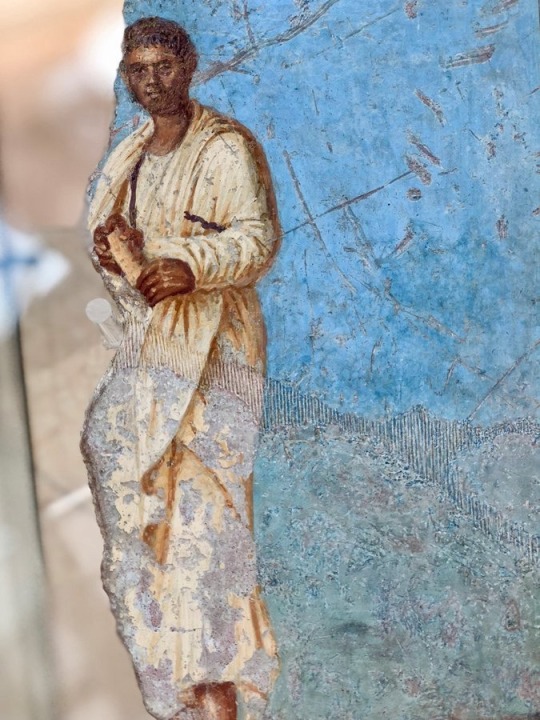



Hell yeah, thank you so much for this input!!!
(I have a lot of feelings about the era of the “I have money and no idea what I’m doing, I’m going to go eat a mummy.” Or “I’m going to go find Troy and inadvertently contribute to the Nazi platform.” (On that note, if you find that article interesting, I highly suggest these episodes of Behind the Bastards on the history of the swastika (part 1, part 2). Because at one point it really was just a symbol that like, every civilization on earth used at one point or another. And then a bunch of racist antisemites had to go and ruin it.) But seriously, Europeans loved eating mummies. Or using them in paint. And generally just destroying priceless artifacts for funsies. It infuriates me much the same way the fact the library at Alexandria was burned infuriates me, y’know?)
But I super agree with you vis a vis the fact we tend to paint “Ancient Rome” and similar societies/empires as a monolith. I mean… here hang on
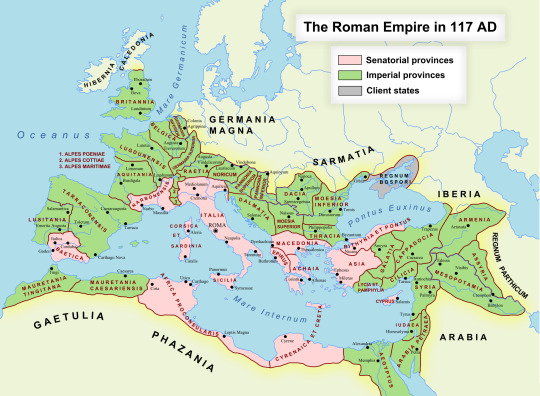
It goes without saying that today, Spanish culture is different from French is different from British, Italian, Greek, Turkish, Algerian, Egyptian, Palestinian, etc etc etc. And that still would’ve been the case at this point. Sure there was influence (and later, it’s hard to escape the influence of the Catholic Church) but it’s not like Roman soldiers showed up one day in all these different places and replaced the whole local culture with marble columns and olive oil. (I mean, there was probably a lot of olive oil, but that’s besides the point)
I would still argue that there is probably a reason that we don’t see as much Roman-era art of Black people as we probably could, and whose fault that is I don’t know—it could be modern curators, it could be those 19th/20th century “archaeologists,” it could be neither and just pure chance—but I am here right now begging people that if you’re writing in this era, think for a few seconds before you pull all of your inspiration from rows of Roman statues portraying white people. (Also, if I’m remembering correctly, those statues were painted some pretty wild colors at their height, which is neat)
ANYWAY, thank you for the extra info !! I appreciate your expertise on the matter :0 thank you very much for sharing!!
5 notes
·
View notes
Photo






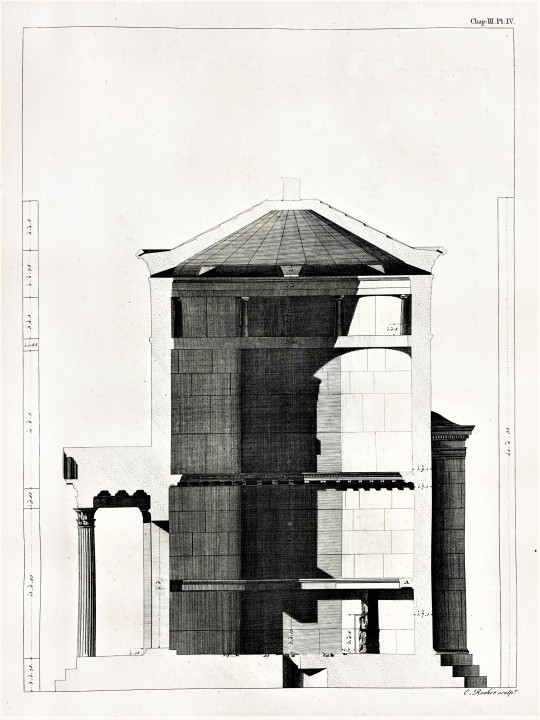
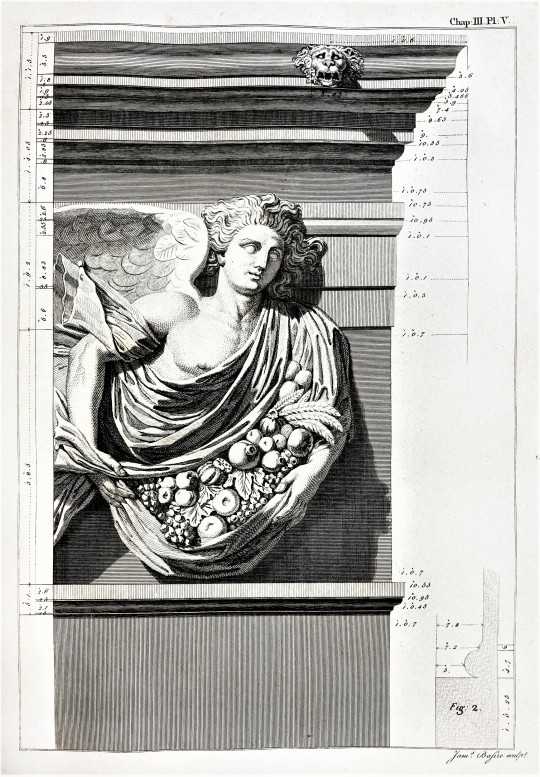


Decorative Sunday!
These beautiful engravings are from the first volume of The Antiquities of Athens by Scottish archeologist, architect and artist, James Stuart (1713-1788) and British artist and architect, Nicholas Revett (1720-1804), printed in London by John Haberkorn in 1762.
The Tower of the Winds is an octagonal marble clock tower in the Roman Agora of Athens. It was designed by Andronicus of Cyrrhus around 50 BC. It was a functional structure that contained sundials, a waterclock, and a wind vane. It is an ancient equivalent of a modern day meteorological station. The building became more widely known outside of Greece because of Stuart and Revett, who were among the first to document the antiquities and monuments of Athens in great architectural detail. Their work is noted for fueling the Greek Revival, an architectural movement in northern Europe, the United States, and Canada in the late 18th and early 19th centuries. When the first volume was published they had more than five hundred subscribers, mostly architects and builders.
The engravings were made by the British engraver James Basire (1730-1802), who specialized in prints depicting architecture. Artwork by Basire is held in museums throughout the world. He is also known for having the young William Blake (1757-1827) as an apprentice for seven years.
The well known artist William Hogarth (1697-1764) published a satirical print called The Five Orders of Periwigs in which he classifies the ridiculous wigs that were in fashion at the time into “orders” with greatly detailed measurements. This was a direct satire of Stuart and Revett’s work and similar work of which he said “It requires nor more skill to take the dimensions of a pillar or cornice, than to measure a square box.”
The tower’s frieze depicts the eight winds in bas-relief represented figuratively as gods, the Anemoi: Zephyrus, the West wind; Boreas, the North wind; Kaikias, the North East wind; Apeliotes, the East wind; Eurus, the South East wind; Notus, the South wind; Lips, the South West wind; and Sciron, the North West wind.
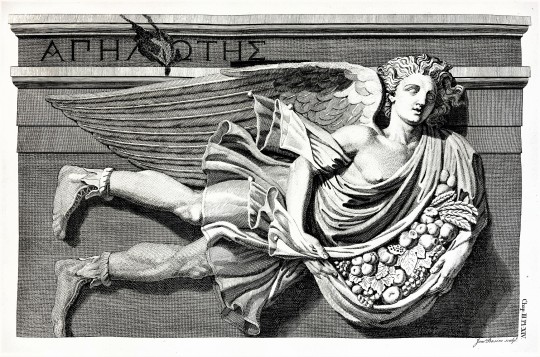
Apeliotes, The East Wind.
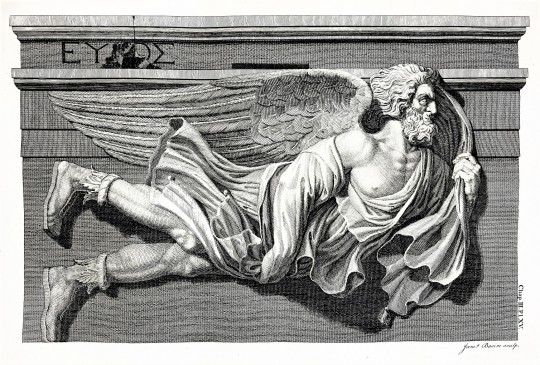
Eurus, The South East Wind.

Notos, The South Wind.

Lips, The South West Wind.

Sciron, The North West Wind.
View more Decorative Sunday posts.
-Teddy, Special Collections Graduate Intern
#Decorative Sunday#decorate plates#decorative arts#tower of the winds#athens#greek mythology#greek architecture#architecture#the antiquities of athens#james stuart#nicholas revett#James Basire#Andronicus of Cyrrhus#John Haberkorn#William hogarth#weathervanes#Engravings#18th century#greek sculpture#roman mythology#roman architecture#archeology#Teddy#Roman Agora#athens greece#Ancient Greece
102 notes
·
View notes
Text
Gods of ancient slavs: Perun and his imaginary friends
Let's deal with what gods in Ancient Rus' were, and what were not.

The gods of pagan nations are a rich and interesting topic. Their images, in some ways unique, and in some ways similar in different nations, inspire many modern authors. Including in the genres of fantasy, sci-fi, and magic realism.
Back in the 19th century, attempts were made throughout Europe to reconstruct ancient beliefs and understand what gods were worshipped by ancestors. And, of course, the myths of ancient Greece were taken as a model.
The only thing is that we were usually talking about non-written cultures, which left behind very few sources. And if the Scandinavians, for example, had the Eddas, written down already by Christians, but quite early, as well as inscriptions carved in stone, then with the Eastern Slavs everything did not work out so well. We have no recorded epic stories about the gods, and we have to rely on fragmentary evidence in chronicles and denunciations against the pagans, as well as scanty archaeological data. That is why there is so much speculation and outright fiction about the gods of the Eastern Slavs.
In this text, let's try to figure out what we really know about them, what we can assume, and what is quite far from the truth.
The Pantheon of Knyaz Vladimir
The most famous source of information about the gods worshipped in Ancient Rus is the enumeration of idols installed by Knyaz Vladimir in Kyiv, from the "Tale of Bygone Years":
"And began to reign Vladimir in Kyiv alone, and put idols on the hill, outside the palace yard: wooden Perun with a silver head and golden whiskers, Khors (and) Dazhbog, Stribog, Simargl and Mokosh."

Vladimir puts idols of gods in Kyiv. Late 15th c. Radziwillov Chronicle, Library of the Academy of Sciences, St. Petersburg
It should be kept in mind that Vladimir pursued quite specific goals: he tried to unite Rus around Kyiv through a single set of beliefs. That is, it would be wrong to say that the erected idols are an exhaustive list of gods or that all popular gods got there. For example, we are talking, apparently, about Slavic gods, and on the territory of ancient Rus lived also Finno-Ugrians, Turks, Balts.
In addition, it is important to understand that any paganism (even Greek) at the level of practice looks not as the veneration of a once and for all definite pantheon, but as the worship of numerous local deities - patrons of rivers, hills, forests, cities. People turned to them for any reason: for good luck in war, for a rich harvest, and for protection from evil forces. Different gods could merge in one area, and in another, on the contrary, one god was divided into two characters or more.
We do not know on what principle idols were selected in Kyiv. For example, Veles (Volos), often found in other sources, is not mentioned among them. In addition, the "Tale of Bygone Years" was preserved in lists XIV-XVI, not in the original, and the lists were often made with errors. And Nestor did not aim to accurately convey the pagan ideas. But we have what we have - there is nothing to choose from.
So what do we know about the 5 (or 6) gods mentioned in the Tale?
Perun
We know relatively much about Perun. He is often mentioned in various sources, he was worshipped by the Western Slavs, about whose customs we know a little more. He is also close to the Baltic Perkunas, and many of his features and related legends were attributed to Ilya the Prophet and remained in this form until the Revolution.
Perun is a thunder god. The very word "Perun" in Russian, Ukrainian and Belarusian is used as an obsolete and poetic name for lightning. This was an important god for the inhabitants of Ancient Rus, commonly known and honored. He may well be considered the supreme god, if it is necessary to emphasize such a figure. The Byzantine Procopius of Caesarea wrote back in the 6th century that the Slavs (it was about the South Slavs) above all venerate an unnamed thunder god to whom they sacrifice bulls. The connection of Perun with warriors and militancy, oaks, weapons - all this is characteristic of the gods-thunderers - looks quite plausible.
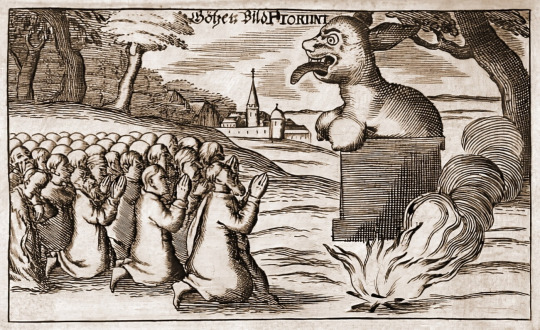
Worship of Perun among the Muscovites. Engraving from the book by G. A. Shleizing "Ancient and New Religion of the Muscovites", 1698
Later sources mention rituals in honor of Perun. For example, Novgorod fights were described, which were associated with the commemoration of Perun. There is also a mention of the rafting of Perun's idol down the river, similar to the description of the overthrow of his idol from the Tale of Bygone Years. Some researchers suggest that the chroniclers simply incorrectly conveyed the regular ritual. The motif of such funeral-conductions is rarely associated with thunder gods, it is more characteristic of the gods of the sun and fertility. This may mean that Perun had such functions as well.
Various assumptions about Perun's family ties, specific features of his veneration, sacrifices, temple construction, etc. should be treated with caution: they are based on controversial scientific data.

The overthrow of the idol of Perun in the painting "The Trampling of Old Russian Gods" by E. Shtyrov
But one can look at the peculiarities of popular veneration of the "formidable saint" Elijah the Prophet. His image began to converge with Perun even before the official baptism of Russia, as pagan and Christian legends converged (such a merger is more than characteristic of the pagan picture of the world). Most likely, this is what made Ilya one of the most revered saints in Rus'.
It was believed that the prophet rode across the sky on a golden or fiery chariot and struck devils and various creeps with lightning arrows. In some regions it was believed that Elijah should pray in a thunderstorm all the time, so that a demon would not enter a person, because then the prophet would strike him with lightning. Caution should be observed on Ilya's day at the end of the harvest (August 20): on this day it was forbidden to work in order not to anger the saint. In addition to striking devils and people with lightning, Ilya also sent down rain and drought. These legends about the saint probably go back to the image of Perun.
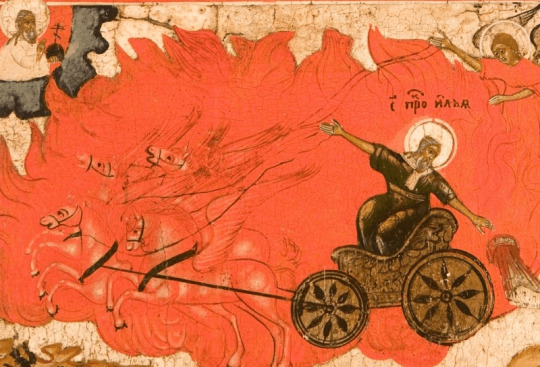
Elijah the Prophet on his chariot
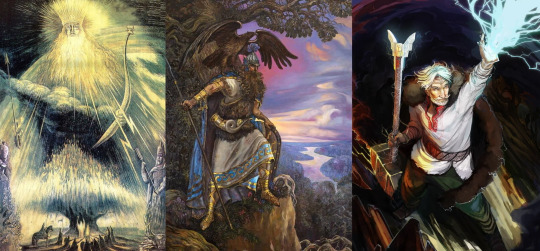
Various Peruns by lugvelesasrz, A. Klimenko, Mikado13
Mokosh-Makosh

Makosh by Viktor Korolkov
Mokosh is the only female goddess in Knyaz Vladimir's pantheon.
The romanticist researchers largely invented her cult from the folk veneration of St. Paraskeva Pyatnitsa, associated with weaving and needlework. From weaving made the transition to the threads of life, and Mokosh turned into the goddess of fate. The problem is that unlike Perun and the prophet Elijah, we do not know anything about Mokosh at all, except that she was a woman. For example, we have no data that she was depicted with a spinning wheel. So there is simply nothing to draw parallels between her and Paraskeva.
Sometimes the figure of Mokosha is brought closer to such a folklore character as Mother raw earth. This is a common image in bylinas and fairy tales, and we can conclude that in the Slavs' ideas the earth occupied a very important place. But it is hardly worth talking about the personification of the earth in the form of a goddess. Most likely, the earth as a living element was meant, which reminds ancient religious ideas, for example, the Chinese. However, it is possible to correlate Mokosh with Mother raw earth. This is much less of a stretch than many other theories about the Slavic gods.
Who else could be the only goddess included in the new unified pantheon? For example, the goddess of women, patroness of childbearing and women's crafts. Or the goddess of fertility, possibly acting as wife of Perun. Or maybe a warrior goddess like Ishtar, the embodiment of power and luck in battle. Such a woman could well be on the princely hill, where, judging by the "Tale" did not take the "cattle god" Volos, despite his great importance. Historical data in no way limit the flight of our imagination.

Mokosh by BirnaAlicja
Khors-Dazhbog
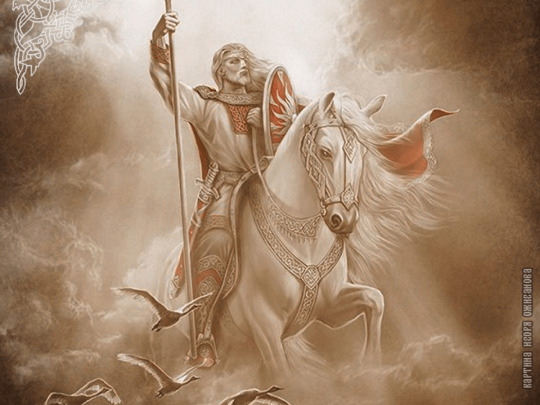
Khors by Igor Ozheganov
The further things are worse. Between the names of Khors and Dazhbog in the "Tale" there is no union, but between the other names there is. This may be a reproduced mistake of the scribe. Or it may be an indication that these are two names of the same god (Khors-Dazhbog). In other sources both gods appear separately, but are never mentioned together.
In the "Conversation of the three saints" there is such an answer to the question where lightning comes from: "There are two thunder angels: the Hellenic elder Perun and Khors the Jew - these are the two angels of lightning". What it means and why these national epithets - who can tell. Some researchers believe that this is an indication that the cult of Khors came to Russia from the Jewish Khazaria, but this is a controversial statement.

Khors by Andrey Shishkin
There are also questions with lightning. This is the only mention of Khors with its functions. But there is a popular theory about the etymological connection of Khors with the Iranian-language root "khur", "khvar", meaning "sun". Linguists dispute this point of view, but so far it remains dominant, and the idea of connection of Khors with lightning, which does not fit into this concept, is often rejected.
In the "Tale of Igor's Campaign" there is an ambiguous phrase: "in the night trotting wolf: from Kyiv to Tmutorokan kurs, to the great Hrsovi the way was broken". Interpreting "Hrsovi" as "Khorosovu", romantically inclined researchers conclude that the "Khors' way" and consisted in "trotting wolf". And so Khors was actually connected with wolves, werewolfism and acted as a dark god of wild beasts and witchcraft. But it should be remembered that the only direct indication of Khors' functions is connected with lightning, and in the "Tale" it is quite possible that he was not meant at all.
In short, the god Khors was, but what he was doing - we will never know.
And what about Dazhbog? Let's see what Wikipedia calls the most informative source about him - "Chronography" by the Byzantine John Malala. He wrote, however, about the Egyptians, and the name Dazhbog was used to translate the name of the sun god Helios mentioned there, which in turn symbolized Amon Ra. From this we can conclude with some tension that the translator associated Dazhbog with the sun god. Also the word "Dazhbog" is mentioned in Ukrainian songs, including as the one who ends winter and begins summer. This also confirms the solar version.
In "The Tale of Igor's Campaign" knyazs or all Rus' people are called "Dazhbog's grandsons". Although there are different opinions about what this means, perhaps it is about the fact that Dazhbog was perceived as the forefather, the god-grandfather of the nation or humans in general.

Dazhbog by Andrey Shishkin
Stribog
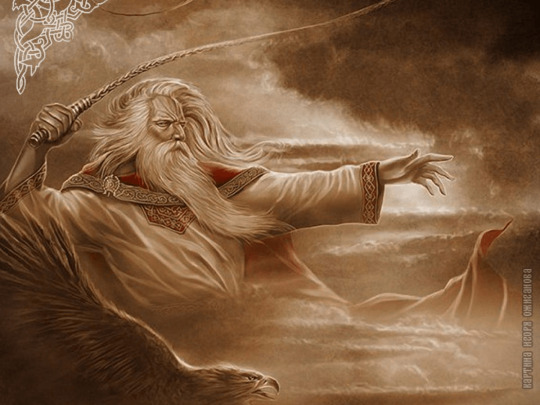
Stribog by Igor Ozheganov
Stribog is another character about whom we know nothing. Practically the only mention - in "The Tale of Igor's Campaign" it is said about the winds as "Stribog's grandsons", who direct arrows against Igor's army. On the basis of this not even a passage, but a sentence, theories were built that Stribog is the god of winds, as well as an evil god, an opponent of men, who was opposed to Dazhbog (mainly because both words are arranged in the same way).
From here went the identification of Stribog with St. Kasyan - a very curious character of folk Orthodoxy, evil, hostile, crooked (oblique) in one eye, guarding hell and sending winds and diseases. Kasyan deserves a separate story, but the grounds for his correlation with Stribog are very shaky.

Worship of Stribog at the Muscovites. Engraving from the book by G. A. Shleizing "Ancient and New Religion of the Muscovites", 1698
Simargl

Semargl by V. Korolkov
And the most mysterious character of Vladimir's pantheon is Simargl. In the "Word of a certain Christ-lover and zealous for the right faith" there is a quote: "believe… in Sim and in Rjgl (Erjgl)". But in other manuscripts Simargl or Semargl is written in one word. Who this person or persons were, what they did, is unknown. At some point his name was correlated with the Iranian Simurg on the basis of the similarity of the words. Simurgh is a mythical king-bird whose image probably (probably!) derived from Senmurv, a half-bird half-dog. The odious researcher Rybakov suggested that it was the half-bird-half-dog that stood on the hill in Kyiv, that he was the messenger of the gods, and was also associated with fertility and much more. All this does not stand up to criticism from a scientific point of view.
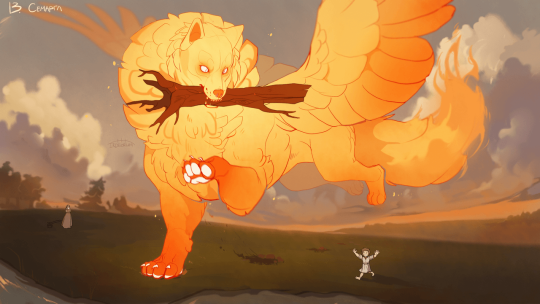
Simargl by Irdeorum-III
Who wasn't taken to the hill?
Volos / Veles
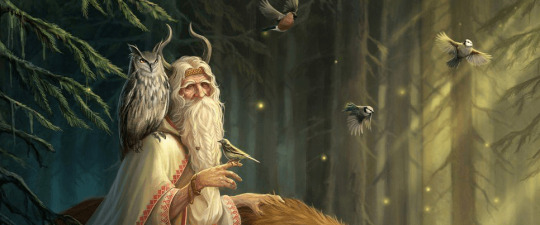
Veles by baklaher
Volos, judging by frequent references in sources, was a popular god of Ancient Rus. His name was sworn along with the name of Perun. He is often called the "cattle god", i.e. the patron of cattle, and therefore of wealth. That is, we even know what functions he had.
"The Tale of Bygone Years" does not mention Volos among the idols of Knyaz Vladimir's "pantheon". Much later "Kyiv Synopsis" mentions, but there and all the rest of the list differs, except for Perun. And in "The Life of Vladimir" it is said that the idol of Volos was thrown into the river, where in the "Tale" the idol of Perun was thrown. And here it is not clear: the idol of Volos was, but stood separately, as some researchers claim - for example, at the market? Or stood together with all, and Nestor did not mention it? Or some of the gods described by him is actually Volos?
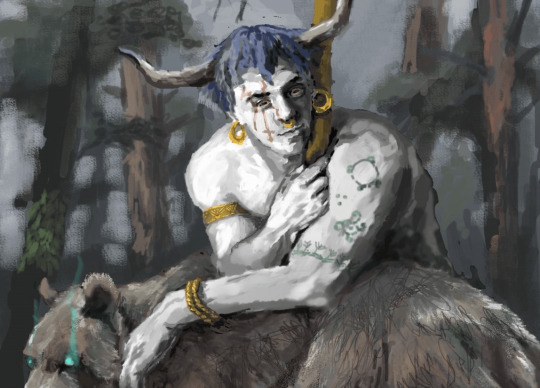
Veles by Milica Cvetic
All information about Volos besides the fact that it was an important god of cattle looks extremely shaky. There is a theory that he was an opponent of Perun. It is based on the correlation of Volos with the Baltic Vels and Velnyas, a spirit connected with the underworld and cattle, and the opponent of Perkunas the thunderer. However, it should be realized that the sources telling already about this character are rather late and of ambiguous authenticity.
When contrasting Volos and Perun, it is sometimes said that Volos was the earthly god of gold and the common people (apparently, farmers), and Perun was the heavenly god of war and the rulers' retinue. This idea is based largely on the text of the oath, which mentions both Perun and Volos, as well as gold and weapons: "let us be cursed by the God in whom we believe, Perun and Volos, the cattle god, let us be as yellow as gold, and let us be cut with our weapons".
But, first, there is no obvious distinction here. Secondly, gold is mentioned in the context of yellowing of the skin and speaks rather of disease. It would be more accurate to conclude that these were powerful gods ruling over life and death. Hair was indeed most likely associated with wealth, but expressed primarily in livestock . And the possession of wealth is not very peculiar to the "common people" who are usually poor.

Perun fights with the serpent by A. Fantalov
The further development of the idea of the enmity between Perun and Volos turned him into a serpent, because the motif of the battle between the thunderer and the serpent is archetypal and is found in many peoples. The opposition of heavenly birds with earthly snakes, "creepers", in the culture of the Eastern Slavs occupies a very important place. But there is no reason to believe that it goes back to Volos.
"The Tale of Igor's Campaign" contains an indirect reference to Volos. Bayan, the legendary narrator, is called Veles' grandson. This can be understood as an epithet referring to his gift of words. And on this basis Veles is sometimes considered the god of poetry.

Veles by A. Klimenko
A more creative interpretation says that it refers to the gift of sorcery or volkhovanie. The idea of Veles as a god of wisdom, as well as many of his other attributes, entered popular culture from the "Book of Veles", a forgery from the 50s of the 20th century. For sure we can only say that there was such an important god Volos, and he had power over cattle, and thus welfare.

Veles by Andrey Shishkin
Svarog and Svarozhich

Svarog by Igor Ozheganov
Svarog is mentioned in the "Tale of Bygone Years", in the above described "Chronography" of John Malala. There, I remind, we are talking about the Egyptians, and the word "Svarog" is used to translate the name of Hephaestus (which is called, apparently, Khnum). Other sources mention Svarozhich, and it is probably the same character. Svarozhich was honored by the Western Slavs and was associated with fire. Whether he was honored in Ancient Rus is unknown.
Even if he was, a fire god is not always the same as a smith god, as Svarog is usually represented in popular culture. A fire god can be a god of hearth and sacrifice, a mediator between gods and humans, like the Indian Agni.
All others
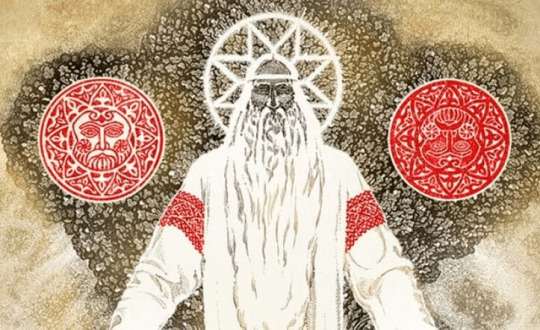
Rod by Maxim Kuleshov
For example, Trojan is the demonized emperor Trajan. His image is found in the folklore of the South Slavs, but it is more of a fairy-tale character. In "The Tale of Igor's Campaign" Trojan is also present, but there it is said about "time" or "trope" of Trojan, so it is not very clear whether it is about some ancient ruler-man, mythological character or deity, or whether there is some mistake of the copyist or translator.
It is also known as Dyj or Diy. Sometimes it is mentioned among the gods worshipped by pagans, but more often it is used to translate the name of Zeus in the retelling of ancient myths.
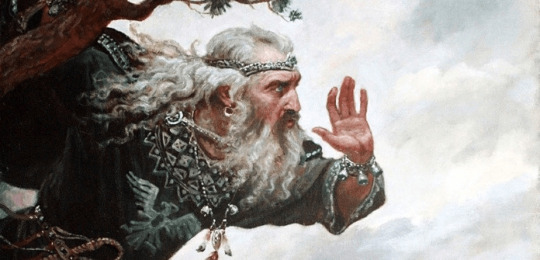
Pozvizd by Andrey Shishkin
Rod and the Rozhanitsy are not infrequently mentioned. But usually in the same lists, where in addition to gods it is said about the worship of vilas, ghouls, bereginas. Which, undoubtedly, were important characters in Slavic folklore, but they are rarely called gods, singling them out as a separate category (like nymphs, alves and other spirits). How far this is actually legitimate - the question is debatable, but this is the tradition. And it is quite possible that under Rod and Rozhanitsy meant the worship of ancestors and patron spirits.
The "Kyiv Synopsis", compiled very late, in the 17th century, gives an alternative list of idols erected by Vladimir. In addition to Perun, called the god of thunder and rain in human form, Volos, the god of cattle, as well as Pozvizd, Lado and Kupalo are mentioned.
All of them are associated with the book tradition: the authors of later sources, in imitation of the Greeks, invented gods themselves and then copied them from each other. Sometimes they relied on parallels with the same ancient mythology, sometimes - on grassroots folklore, folk rituals and festivals. And when odious researchers began to study such sources, Lado or Uslad, appearing in several later sources in the male gender, turned into the goddess Lada. That is, here we see layers and layers of fiction.
To such a mythology invented by scribes belong also Lel, Lelya and Polelya. The last three are chants like "la-la-la-la-la" deified in a desperate attempt to find some pagan gods.
Marena was hardly a goddess either, no matter how attractive her image in popular culture as a strong woman who commands winter and death. In fact, she is a ritual character, an effigy or tree burned when winter is spent, like Maslenitsa - or ritually mourned in later spring, like Kostroma. The latter connects it with the death-rebirth cycle: it is a metaphor for the sowing of seeds into the ground ("funeral") and their subsequent germination ("rebirth").
The second reason for the appearance of the image of the goddess of death is the similarity of the name Marena to the Latin root mor: "death", i.e. the fact that Christian authors and early researchers were engaged in folk etymology (this is when words are attributed a similar meaning because they sound similar, a headache for any linguist). But of course, the gothic ice maiden is beautiful.
Another popular image popularized by Gaiman's American Gods is Chernobog, the malevolent god of evil. The character is also very spectacular, moreover, most likely, really former god. It is described, however, in the Baltic Slavs, but in Russia and Ukraine there are toponyms referring to this name. We do not know much about him, except that because of the ominous name of Chernobog very much loved Christian authors, boldly writing him in the devils.
Often he is mentioned together with Belobog, his antagonist and embodiment of good. But in recent times, the opposition between Chernobog and Belobog has been attributed to the fantasy of authors impressed by Manichaeism (a dualistic religion that asserted that evil and good were equally powerful).

Chernobog and Belobog by Maxim Shukharev
As for Chernobog himself, if he was not invented by Christian authors, it is not a fact that he was such a villain. Black color does not always mean something bad, it can be associated, for example, with black soil - fertile land. It is not excluded that the black god could be called different characters depending on the area or specific idols made of black stone or wood.
Of course, it is a pity that we are not left with at least our own Edda to learn more about the gods worshipped by the Slavs in the territory of Ancient Rus. But this is not a unique situation - in many countries, ideas about the pagan past are also based on romantic speculations, controversial etymological constructions and Christian or Roman sources.
And if you want to learn more about mythological representations of Russians, Belarusians and Ukrainians - turn to the rich grassroots folklore, folk orthodoxy, fairy tales and songs. There you can find a lot of beautiful and interesting characters, images and themes that are undeservedly overlooked in attempts to find gods like those of the ancient Greeks.
Original by Maria Solntseva
Translated by me :)
#slavic#slavic culture#slavic folklore#slavic folk#slavic mythology#folk#folklore#slavs#history#culture#history tag#mythology and folklore#mythology#slavic polytheism#slavic paganism#paganism#pagan#paganblr#diety work#ancient history#ancient rus#human history#polytheism#cultural history
19 notes
·
View notes
Note
as someone new to your blog could you go into your racebent romano? thank you! could you go into how you write the character? how it effects him? what brought you to that interpretation of him? i am very curious /gen
Of course!
So the reasons that I ultimately decided to make Romano as a mixed man have to do with me disliking the way that Hima stated Romano was mixed race only to then claim it was his "Arab blood" that makes him so mean and violent. That's just....yikes. For so many reasons. I'm really surprised the fandom doesn't talk about that more.
But I suppose that would mean people admitting Hima is not great and people lose their minds over that. But ANYWAY
The other reasons that I ended up making him mixed-race is because I write him to be in touch with the Arab influence in Southern Italy anyway and it fit. As well as me also being a person of color, I wanted to see a little bit of myself in his character even if I am Latino and not European haha.
But for some more details.
As far as Nationverse goes, I headcanon Romano and Veneziano to have different mothers. While Veneziano's mother was Ancient Greece, Romano's mother was Phoenecia. When in humanverse, Romano's mother is Lebanese (I believe in one of my fics I made her Tunisian but that is scrapped for everything else humanverse) or Syrian. Feliciano's mother is Greek.
Overall, his mixed-race identity has greatly affected him over the years. It's led to a lot strife due to colorism and racism, has bothered him in Europe, and was a great factor in the way he treated during Risorgimento.
He was greatly impacted by the idea that his Arab heritage made him more violent, more barbaric, and unable to be a fit leader for his people. This especially had a big impact on how he was dealt with during Unification. Often times he was dismissed or treated like he was incapable of changing into someone that could be a good leader.
The other thing it historically impacted him with is that it caused him to be viewed as an outsider to his own home. Even though he has always been there and has a deep history with the land, the fact that he looks different and comes from a nonwhite mother caused a lot of poor treatment for him.
For a long time, he tried to make himself more European and erase the racial/ethnic background he comes from. So a lot of his early portraits and such lighten his skin and make his hair look a lot more loose or wavy compared to the curls he has now. He stopped doing this around the time of Risorgimento as he didn't want to feel ashamed of who he was any longer.
I think it's a complicated thing for him. He doesn't feel shame anymore and he takes a lot of pride in the fact that he is a testament to his people's history, but he would be lying if he said he didn't sometimes wish he and Feliciano came from the same mother. Oftentimes, he struggles with feeling like he'll never quite reach the place he wants to be in life. He worries he'll never be seen as fit to represent his people and he worries he might have done all this fighting in Risorgimento for nothing.
With modern attitudes towards Arab immigrants in Italy, he especially is hesitant to talk about how he feels with people. The last thing that he wants is to give his government yet another reason to limit the impact he has on things in Italy and how it's governed.
He definitely struggles a lot with either being seen as an outsider or being seen as someone who can't fully understand the needs of his people. Though he works hard with everything going on, the impact of ideas such as The Southern Question (the 19th century idea that the South of Italy was backward and unable to be reformed) still limit him. HIstory has taken its toll on him and he definitely has a lot of feelings about that.
Overall, he doesn't feel shame but he does feel frustration at the idea that he might never be seen as capable enough to govern his people simply because of who his mother is/the color of his skin. It's something he is passionate about and he definitely puts up a lot of fights in the current day about it, refusing to be fully silenced by his government. But in the end, there are still a lot of things that are restricted for him because of this.
He's a fighter until the end. He always has been. Even when he knows he might lose, he has always fought and he continues to do so. No matter what the attitude is towards him, he will always be firm about knowing he deserves more. No matter how Europe has treated him, he perseveres. He's a resilient character and that is such a core aspect to the way I write him.
Until his last breath, he will fight to prove everyone that has looked down on him wrong.
8 notes
·
View notes
Text
More Art-Related Vocabulary

Abstract Expressionist: An artistic movement of the mid-20th century emphasizing an artist’s freedom to express attitudes and emotions, usually through nonrealistic means.
Age of Exploration (also, Age of Discovery): From the early 15th century to the early 17th century, European ships traveled around the world in search of new trading routes, lands, and partners to supply an ever-growing European market.
Albumen silver print: A photograph made using a process that was prevalent until the 1890s. The paper is coated with albumen (egg whites), and the image is created using a solution of silver salts.
Brayer: A hand roller used for applying ink to relief printing blocks or occasionally for the direct application of paint or ink to a surface.
Caricature: A representation in either literature or visual art that includes a ridiculous distortion or exaggeration of body parts or physical characteristics to create a comic or gross imitation.
Ceramics: Vessels of clay made by using a variety of shaping techniques and then hardening or firing the clay with heat at a high temperature.
Chasing: A term encompassing two processes in metalworking: (a) modeling decorative patterns on a hand-shaped sheet-metal surface using punches applied to the front, and (b) finishing and refining a cast sculpture.
Classical: Describes a prime example of quality or “ideal” beauty. It often refers to the culture, art, literature, or ideals of the ancient Greek or Roman world, especially that of Greece in the 4th and 5th centuries B.C.
Collage: An art form and technique in which pre-existing materials or objects are arranged and attached as part of a two-dimensional surface.
Color palette: (a) A set of colors that makes up an image or animation, and (b) the group of colors available to be used to create an image.
Composition: The process of arranging artistic elements into specific relationships to create an art object.
Daguerreotype: An early method of photography produced on a silver plate or a silver-covered copper plate made sensitive to light.
Exoticism: Fascination with and exploration and representation of unfamiliar cultures and customs through the lens of a European way of thinking, especially in the 19th century.
Expressionism: A style of art inspired by an artist’s subjective feelings rather than objective or realistic depictions based on observation. Expressionism as a movement is mainly associated with early 20th century German artists interested in exploring the spiritual and emotional aspects of human existence.
Gelatin silver print: A photograph made through a chemical process in which a negative is printed on a surface coated with an emulsion of gelatin (an animal protein) containing light-sensitive silver salts.
Illuminated manuscript: Comes from the Latin words illuminare (to throw light upon, lighten, or brighten), manus (hand), and scriptus from the verb scribere (to write). A handwritten book, usually made from specially prepared animal skins, in which richly colored and sometimes gilded decorations, such as borders and illustrations, accompany the text.
Illuminator: A craftsman or artist who specializes in the art of painting and adorning manuscripts with decorations.
Impressionist: Referring to the style or theories of Impressionism, a theory or practice in painting in which objects are depicted by applying dabs or strokes of primary unmixed colors in order to evoke reflected light. Impressionism was developed by French painters in the late 19th century.
Inking plate: A flat surface used for rolling ink out in preparation for applying ink to a plate or block.
Inscription: A historical, religious, or other kind of record that is cut, impressed, painted, or written on stone, brick, metal, or other hard surface.
Source
Art Vocabulary pt. 1
More: Word Lists
#art related#word list#photography#dark academia#writing reference#spilled ink#writeblr#literature#writers on tumblr#writing prompt#poetry#poets on tumblr#history#studyblr#creative writing#writing inspiration#writing inspo#writing ideas#art#konstantin somov#rainbow#nature#writing resources
42 notes
·
View notes
Text
The Evolution of Entertainment From Ancient Times to the Digital Era
Entertainment has always been an essential part of human culture, offering a respite from daily life and a chance to experience joy, wonder, and emotional connection. From ancient civilizations to the current digital age, Entertainment has undergone dramatic transformations, reflecting shifts in technology, culture, and society. This article explores the rich history of entertainment, tracing its roots, its evolution through various epochs, and the ways in which modern-day entertainment continues to captivate and evolve.
Ancient Beginnings of Entertainment
The desire for entertainment is as old as civilization itself. Early humans entertained themselves through storytelling, music, dance, and games. In prehistoric times, cave paintings might have served both a ritualistic purpose and an early form of visual entertainment. The ancient Egyptians held grand festivals and celebrations, filled with music, food, and dance, while the Greeks and Romans elevated entertainment to new heights with theater, gladiatorial games, and chariot races.
Theater in ancient Greece, particularly during festivals like Dionysia, showcased plays that ranged from tragedies to comedies. Playwrights like Sophocles and Aristophanes became cultural icons, and their works laid the foundation for modern drama. Meanwhile, the Roman Colosseum became a center of violent but highly popular entertainment, where gladiators fought to the death, and massive battles were recreated for the audience’s enjoyment. These events were not merely pastimes but also social rituals that bound people together in shared experiences.
Entertainment in the Middle Ages and the Renaissance
With the decline of the Roman Empire, the Middle Ages saw a shift in entertainment that reflected the era's religious and social structures. Religious ceremonies, morality plays, and festivals continued to provide entertainment, often with a strong focus on moral lessons and community engagement. Troubadours and minstrels roamed Europe, singing songs of love, valor, and adventure, which kept people connected to their cultural roots despite widespread political instability.
The Renaissance, however, marked a flourishing of the arts, and entertainment became more intellectual and varied. The printing press, invented by Johannes Gutenberg in the 15th century, revolutionized access to literature and knowledge, allowing the masses to experience stories and ideas beyond their immediate environment. Theater also grew in prominence during this period, with the works of Shakespeare, Cervantes, and Dante establishing the standards for narrative and character development that continue to influence literature and entertainment to this day.
The Rise of Mass Entertainment in the 19th and 20th Centuries
The 19th century saw the birth of new forms of entertainment designed to appeal to a wider audience. With the Industrial Revolution came a shift from agrarian societies to urban centers, leading to the rise of public spaces like theaters, opera houses, and music halls where large groups could gather to be entertained. The advent of photography and, later, motion pictures in the late 1800s revolutionized visual entertainment. The Lumière brothers’ invention of the cinematograph in 1895 gave rise to the motion picture industry, leading to the silent films of the early 20th century and later the golden age of Hollywood.
Cinema quickly became one of the most dominant forms of entertainment, offering people a glimpse into different worlds, cultures, and ideas. Stars like Charlie Chaplin, Marilyn Monroe, and James Dean became cultural icons, influencing fashion, behavior, and attitudes. Radio and, subsequently, television became the next major platforms for entertainment in the 20th century. These technologies brought music, news, and serialized dramas directly into people's homes, creating a new communal experience around entertainment.
Music, too, experienced a revolution with the invention of the phonograph and the rise of recorded sound. Jazz, rock ‘n’ roll, and pop music transformed the cultural landscape, with artists like Elvis Presley, The Beatles, and Michael Jackson shaping not just entertainment but entire cultural movements. The 20th century’s advances in technology allowed for the mass production and distribution of entertainment, making it accessible to people of all walks of life.
The Digital Era: Streaming, Social Media, and Gaming
The 21st century has brought about perhaps the most significant transformation in entertainment: the digital revolution. The internet has democratized entertainment, allowing creators from all over the world to reach global audiences. Streaming services like Netflix, YouTube, and Spotify have changed the way people consume media. No longer bound by television schedules or theater release dates, viewers can access films, TV shows, and music whenever they want, often in binge-watching marathons that were unheard of just a few decades ago.
Social media platforms like Instagram, TikTok, and Twitter have turned ordinary people into entertainers. Influencers, YouTubers, and content creators can amass huge followings, sometimes rivaling traditional movie stars or musicians. The interactive nature of these platforms allows audiences to engage directly with entertainers, blurring the line between creators and consumers.
Video games have also risen to unprecedented popularity, becoming a dominant form of entertainment. Games like "Fortnite," "Minecraft," and "The Legend of Zelda" have large, dedicated fanbases and offer immersive worlds that provide not just passive entertainment but interactive experiences. With the advent of virtual reality (VR) and augmented reality (AR), the boundaries of entertainment are being pushed even further, creating immersive experiences that were once the stuff of science fiction.
The Future of Entertainment
As technology continues to evolve, so will entertainment. Artificial intelligence (AI) is already being used to create music, write scripts, and even produce visual art, raising questions about the future of creativity and human involvement in entertainment. Virtual reality and augmented reality are likely to become even more integrated into our daily lives, offering new ways to experience stories, games, and even live events like concerts or sports.
Moreover, the rise of the "metaverse" — a collective virtual space where people can interact in real time — could radically change the way we think about entertainment. In the metaverse, entertainment won’t just be something we consume; it will be something we live inside, interacting with others in real-time virtual environments that blur the lines between reality and fiction.
In conclusion, entertainment has come a long way from the early days of storytelling around a fire to today’s immersive digital experiences. As technology and culture continue to evolve, so too will the ways in which we entertain ourselves. What remains constant, however, is humanity's deep desire for stories, music, games, and experiences that bring joy, connection, and a sense of wonder to our lives.
2 notes
·
View notes
Text
Hi lovelies,
Guys. This blog. Is one years old today! Woah. Icl I’m really bad at sticking to things so the fact that we managed to get a post every week for a year is pretty cool, so thank you all :)
As it’s pride month (happy pride!!) I’ve been seeing a lot of things on Twitter celebrating queer figures from classical antiquity, and whilst there were definitely queer figures to be celebrated, I think there is a lot of misconceptions about sexuality in the ancient world (especially Greece and Rome). So today I thought it would be cool to talk about male and female sexuality in the Ancient Greece and Rome. Quick trigger warning, there are mentions of pro5tituti0n, r4pe, and sl4v3ry, so read at your own risk and please stay safe <3
Okay so just some quick things to understand. The term ‘homosexual’ wasn’t coined until the the late 19th century, and the word bisexual until 1892. In regards to Ancient Greece, it was a largely homosocial, if not ‘homosexual’.
So starting off with Ancient Greece. Potential sexual partners for men included other free men (in the realms of pederastic relationships), wives, pro5titut3s, and both male and female slaves. Pederastic relationships were the main form of homosexual relationships and it was basically a socially acceptable, educative and erotic relationship between an adult male (mid-20s to 30s) and a younger male (mid-to-late teens to early-twenties). The older lover was called the erastes (lover) and the younger was called the eromenos (beloved). The erastes had to pursue the eromenos (usually at the gym) and it was his role to provide education for the younger in the areas of politics, philosophy, rhetoric, and social customs (basically how to be a good citizen). In return, the eromenos would provide the erastes with sexual pleasure, but key point it wasn’t penetrative pleasure because (oh no) that would be too gay. Stupid I know, but basically penetrative s3x would, to them, make one of them ‘feminine’ and in a highly highly misogynistic society that just wasn’t the done thing. But there is evidence to suggest that quite a few men ignored this social convention. For example, in Aristophanes Frogs, they mention a politicians called Cliesthenes who has broken this tradition and in Plato’s Symposium, Pausanias and Agathon. Anyways! The erastes was chosen for his beauty, so the more beautiful you were the better erastes, and therefore education, you would receive. It is really important to note that for the erastes, this wasn’t allowed to be his primary sexual relationship, in that it was expected of him to be married and that his primary relationship was for the purpose of childbirth. Another partner for men in Ancient Greece was was pro5titut3s, and there were two levels of this. The first was the pornoi, who were ‘street workers’ and were slaves (male or female) owned by br0th3l owners. The second levels was the hetairai who were highly educated female courtesans, a mix of free women and slaves, and were primarily seen at drinking parties.
There is little that is know about the sexual partners of women in Ancient Greece but its largely agreed that women could only have male/female relations with their husbands, but as long as it didn’t get in the way of having children, they could also engage in relations with other women. Sappho’s works suggest that this was often the case before marriage.
In Ancient Rome, the potential sexual partners for men included their wives, infames (male or female), slaves (male or female) and extra marital affairs. So starting off with infames, this was a person- that because of their profession) had no legal status in Rome (so actors, gladiators etc…). Because of the focus on the active and passive members of the relationships, the free man always had to be the ‘active’ and the infames the ‘passive’. Generally when it came to homosexuality, romans did not have pederasty and if a roman man wanted to have sex with another man they could as long as they weren’t the passive one, because if a freeman was the passive one it would damage his virtus. Again, like in Ancient Greece, this wasn’t a mans primary relationship and he is still expected to have a wife for the purpose of childbirth. Because of this, relations with male slaves became popular and the term ‘puer delicatus’ (delicate boy) was often applied to slave boys brought specifically for this purpose. Similarly to Ancient Greece, it was encouraged for men to have relations with pro5titut3s and exploit household slaves. Adultery was, however, outlawed but the Lex Julia. BUT, this was hugely hugely unpopular and historian Gaius Suetonius described the reaction as ‘open revolt’. This suggests that extramarital affairs were accepted and popular. Ovid literally has a whole book about pursuing married women and succeeding, which tells you all that it needs to.
In regards to women in Ancient rome, there again isn’t a lot that is known. But Ars Amortia book 3 suggests that women did have extramarital affairs and some form of sexual liberty.
In all, heteronormativity wasn’t as enforced in the ancient world because, in all honesty, they cared more about who took on the ‘feminine’ role, and so their sexual liberty didn’t come from acceptance, but straight up misogyny. Also I read this really fascinating thing that basically said that in todays world where we enforce heteronormativity, we can’t assume that everyone who says they’re straight, is in fact straight. In the same way, to the ancient world where (and forgive my use of modern terminology) homosexuality was expected, you can’t assume that everyone who said they were ‘homosexual’ or ‘bisexual’ actually was. Sexuality has, and always will be, flexible and diverse and deeply fascinating and so you can’t enforce labels on the ancient, or indeed modern, world. It’s fluid and whatever you want it to be, but either way, I hope you all found this interesting!
Thanks for sticking with my awful ramblings for the last year, I love you all loads, and I hope you all have a lovely rest of your weekend <33
~Z
#classical studies#dark acamedia#pride 2023#pride#happy pride 🌈#classics#greek mythology#ancient rome#roman mythology#ancient greece#ancient world#history#hellenic deities#patrochilles#tagamemnon#greek history#roman history#sexuality#gay
32 notes
·
View notes
Text
The Evolution of Thyroid medicines From Early Treatments to Modern Solutions
The thyroid gland plays a vital role in regulating the body’s metabolism, growth, and development. When the thyroid malfunctions—whether through overactivity (hyperthyroidism) or underactivity (hypothyroidism)—the entire body can feel its effects. Over the years, thyroid conditions have become more widely recognized, leading to the evolution of effective medications that help manage these disorders. The development of thyroid medicines has come a long way, transitioning from early rudimentary treatments to modern pharmaceutical innovations that offer patients a higher quality of life.

In this blog, we will explore the history and evolution of thyroid drugs, highlighting how thyroid medicines manufacturers in India and thyroid medicines exporters play a critical role in this process. Additionally, we will discuss the increasing global demand for thyroid drugs, especially in regions like the Philippines, where thyroid medicines suppliers are crucial in ensuring access to life-saving medications.
The Early Days of Thyroid Treatments
Before modern thyroid drugs were developed, ancient civilizations used various natural remedies to manage symptoms of thyroid disorders. Historical texts from Egypt, Greece, and China mention goiter, a visible swelling of the thyroid gland, which was often linked to iodine deficiency. In these ancient times, treatments were rudimentary and primarily focused on addressing visible symptoms like goiter.
In the 19th century, scientific advancements began to shape the course of medical treatments. One of the first breakthroughs in thyroid treatment came in 1891 when George Murray successfully treated hypothyroidism with thyroid extract derived from sheep. This was the first instance of hormone replacement therapy and marked the beginning of the pharmaceutical management of thyroid disorders.
The Discovery of Iodine and Its Role in Thyroid Health
In the early 20th century, scientists discovered the importance of iodine in thyroid health. Iodine is a key component in the production of thyroid hormones—T3 (triiodothyronine) and T4 (thyroxine). It was found that iodine deficiency was one of the main causes of goiter and hypothyroidism. This discovery led to the development of iodized salt as a preventive measure against iodine deficiency, significantly reducing the incidence of goiter worldwide.
However, while iodized salt helped prevent thyroid disorders caused by iodine deficiency, it did not address all thyroid conditions. This led to the continued development of thyroid hormone replacement medicines for those with other forms of thyroid dysfunction.
The Emergence of Synthetic Thyroid medicines
In the mid-20th century, researchers made significant strides in developing synthetic thyroid hormones. The introduction of synthetic levothyroxine (T4) in the 1950s revolutionized the treatment of hypothyroidism. Levothyroxine, which is identical to the naturally occurring hormone produced by the thyroid gland, replaced the crude thyroid extracts used in earlier treatments. Its standardized dosage and predictable absorption made it the gold standard for treating hypothyroidism.
Levothyroxine remains one of the most prescribed thyroid drugs globally, helping millions of patients manage their condition effectively. Today, it is produced by leading thyroid medicines manufacturers in India and other countries, ensuring consistent quality and supply to meet global demand.
In addition to levothyroxine, synthetic T3 drugs, such as liothyronine, were developed to treat hypothyroidism. While T3 medicines are less commonly prescribed than T4 medicines, they offer an alternative for patients who do not respond well to T4 therapy.
The Modern Approach to Thyroid Treatment
With the advancement of medical research and technology, the approach to thyroid treatment has become more sophisticated. The focus is now on personalized medicine, where treatments are tailored to the individual’s specific thyroid hormone levels, symptoms, and overall health.
Thyroid hormone replacement therapy remains the cornerstone of treatment for hypothyroidism, but doctors now have a better understanding of the nuances in dosing and management. For example, some patients benefit from a combination of T4 and T3 therapies, while others may require adjustments based on factors like age, weight, and the presence of other medical conditions.
The rise of thyroid medicines manufacturers in India has been instrumental in meeting the growing demand for thyroid medications. Indian manufacturers are known for producing high-quality, cost-effective thyroid drugs, making these treatments accessible to patients worldwide. In particular, Indian pharmaceutical companies have made significant contributions as thyroid medicines exporters, ensuring that countries with limited pharmaceutical production capabilities have access to life-saving medications.
Global Demand for Thyroid Drugs
Thyroid disorders are common worldwide, affecting millions of people. Hypothyroidism, in particular, is a widespread condition that requires ongoing treatment with thyroid hormone replacement drugs. As awareness of thyroid health increases, so does the demand for effective medications.
India has emerged as a key player in the global pharmaceutical market, with many thyroid drugs manufacturers in India producing a wide range of thyroid medications. These manufacturers are able to meet both domestic and international demand by adhering to strict quality control measures and complying with global regulatory standards.
Indian companies are also recognized as leading thyroid drugs exporters, supplying medications to countries across Asia, Africa, Europe, and North America. For example, in the Philippines, thyroid disorders are a significant public health issue. Thyroid medicines suppliers in the Philippines rely on Indian manufacturers to provide a consistent supply of high-quality thyroid medications to meet the needs of their population.
The Role of Thyroid Drugs Suppliers in the Philippines
In countries like the Philippines, access to reliable thyroid medications is crucial for managing the high prevalence of thyroid disorders. The Philippines faces unique challenges in terms of healthcare access, particularly in rural areas where medical resources may be limited. As a result, thyroid medicines suppliers in the Philippines play an essential role in ensuring that patients have access to the medications they need.
By partnering with Indian thyroid drugs exporters, suppliers in the Philippines can provide patients with affordable and effective thyroid treatments. This collaboration helps address the healthcare needs of a growing population and ensures that patients receive timely and consistent care.
The Future of Thyroid Drugs
As research into thyroid disorders continues to evolve, so too does the development of new and improved thyroid drugs. Scientists are exploring new ways to optimize hormone replacement therapy, including the development of long-acting thyroid drugs that could reduce the need for daily dosing. Additionally, advancements in biotechnology may lead to the creation of more personalized treatments based on genetic and molecular profiling.
Another area of focus is improving the delivery of thyroid drugs. While oral tablets are the standard form of treatment today, researchers are investigating alternative delivery methods, such as transdermal patches and injectable formulations, which may offer more convenient options for patients.
As the pharmaceutical industry continues to innovate, thyroid medicines manufacturers in India are expected to remain at the forefront of these developments, producing the next generation of thyroid treatments. With a strong presence as both manufacturers and exporters, Indian companies will continue to play a critical role in meeting the global demand for thyroid drugs.
Conclusion
The evolution of thyroid medicines from early treatments to modern solutions is a testament to the advancements in medical science and pharmaceutical manufacturing. Today, patients with thyroid disorders have access to safe, effective, and affordable treatments that allow them to lead healthy, normal lives.
India’s pharmaceutical industry, particularly thyroid medicines manufacturers and thyroid medicines exporters, has played a key role in ensuring that thyroid medications are available to patients worldwide. In regions like the Philippines, thyroid medicines suppliers are essential in meeting the needs of those affected by thyroid disorders, helping them access the treatments they require.
As we look to the future, continued innovation and collaboration within the pharmaceutical industry will further enhance the quality and accessibility of thyroid medicines, ensuring that patients everywhere receive the best possible care.
#Thyroid drugs supplier in Philippines#Thyroid drugs exporter#Thyroid drugs manufacturer in India#India#Philippines#TSH#T3#T4#thyroid stimulating hormome#hypothyroidism#hyperthyroidism#thyroid condition#free T3#free T4#thiamine#medicines#medications
4 notes
·
View notes